#fittingly however the best character gets the best scene
Explore tagged Tumblr posts
Text
I DID NOT EXPECT THAT
#- halftone tag |#// spoilers#i literally went “YES” when it happened holy FUCK#fittingly however the best character gets the best scene#- nifftyposting ]#- wedposting ]
3 notes
·
View notes
Text
Top 5 Versions of The Mummy
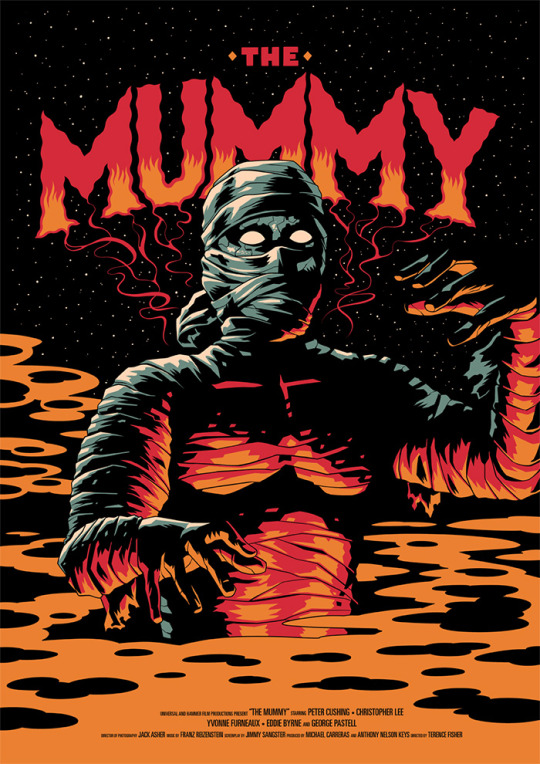
The culture and iconography of Ancient Egypt has been fascinating to more modern minds for many decades. Perhaps its peak of prominence was with the discovery of the resting place of Tutankhamun, a.k.a. King Tut’s Tomb. Among the many, MANY reasons this moment in archaeological history became so famous was because of the rumors of a supposed curse, placed upon the King’s burial chamber, which swore all who disturbed the dead pharaoh’s slumber would suffer a terrible fate. This rumored curse seemed proven when various people connected to the expedition began dropping like flies not so long after the digging was done. While most people accept that King Tut’s Curse is a totally fictitious urban legend, the mystique surrounding the discovery, the rumored hex, and the rising interest in Egyptology as a whole all sort of blended to create an increasing popularity in the use of the subject for works of mystery and horror in fiction. This fascination has never really disappeared, and nowhere is this more obvious than in one recurring monster in fiction: the living mummy. Mummies as walking corpses, spurred on by ancient curses and old superstitions, have been around in fiction since the Victorian era. However, the concept reached its xenith in the early 1930s, when Universal released their famous horror flick, simply called “The Mummy”: the story of a long-buried evil, and a strange romance, returning to wreak havoc on the modern world. I was initially going to talk about Mummies as a whole with this countdown for my October specials…but after much consideration, I realized how difficult that would really be. It’s a bit like talking about Dracula AND other vampires in the same list: you know that one is going to dominate the ranks, and it’s also hard to compare good and heroic characters to the more traditional monster. Perhaps I’ll do a second list about other Mummy characters in the future, but for now, I decided to just focus my list on THE Mummy: the specific, branded property handled by Universal. This franchise, and its lead Mummy figure, have evolved over the years quite a lot. In fact, not only have multiple actors played the creature over the decades - from Lon Chaney Jr. to Tom Tyler - but it’s not even the same Mummy in every single movie. With that in mind, I’m going to base this countdown on a few questions: which Mummies were the most interesting from a character perspective? Which were the most frightening from a horror perspective? Finally, which ones just appeared in the best stories from a writing perspective? With that said, here are My Top 5 Favorite Versions of The Mummy!
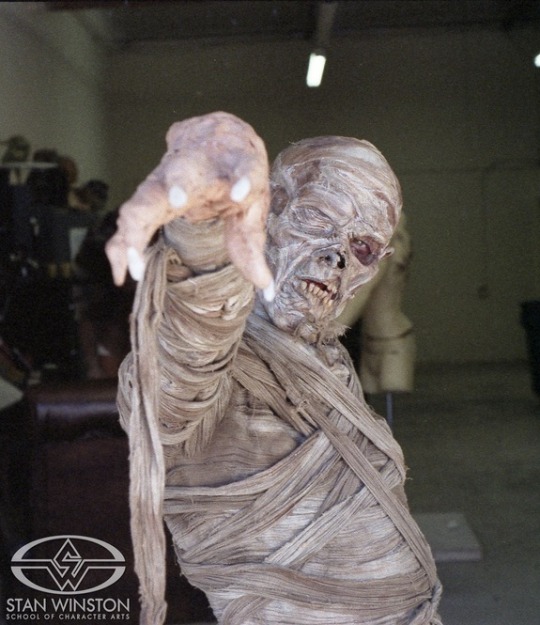
5. Michael Reid MacKay, from Monster Squad (1987).
This is the only Mummy on the list whose given name isn’t offered, as well as the only Mummy who isn’t part of a specific line of films. “Monster Squad” was the Universal Monsters’ response to successes like “The Goonies” and “Ghostbusters.” In fact, the film was literally described as being a combination of those two movies! The plot focuses on a group of kid-and-teen heroes working together to stop the classic Monsters, who have all joined forces with Dracula in a plan to - of course - take over the world. One of the things that made the film popular was the way it updated the designs of the Monsters, making several of them more viscerally unsettling and threatening in appearance. The Mummy was no exception: the costume and makeup for MacKay’s Mummy really does make him seem more gnarled, twisted up, and withered than any other Mummy before, while also making him fittingly unnerving in the scenes where he goes on the attack. He’s one of the creepiest Mummies out there, but he sadly gets taken out pretty easily, and is the first of the Monsters to be properly defeated. As a result, as much as I love MacKay’s physical performance and the outfit he’s in, I don’t think I can rank this version too highly.

4. Eddie Powell, from The Mummy’s Shroud (1967).
After Hammer’s adaptations of “Frankenstein” and “Dracula” turned out to be successful, Universal - who were Hammer’s U.S.A. distributors for a while - gave the UK-based studio the rights to use some elements from their films and adapt them in their own fashion. For the most part, Hammer still did their own thing, but this did give them the opportunity to do their own take on the Mummy franchise. However, while most of the Universal Mummy films followed a loose continuity, there is NO continuity between ANY of the Hammer Mummy movies. All of them are standalone pieces, which just so happen to share similar plot elements and themes. Of all the latter Hammer Mummy movies, “The Mummy’s Shroud” is my favorite. The Mummy in this case (no pun intended) is called Prem; played by actor and stuntman Eddie Powell in the bandages, and by Dickie Owen in flashback scenes (Owen previously played the Mummy in another film). His backstory is a little different from others before him: instead of being a lover-out-of-time, determined to avenge his long lost darling, Prem is the bodyguard and devoted caretaker of a young prince, who died during childhood. Prem is sworn to guard the body of his young charge even after death. When a snobby aristocrat desecrates the tomb, and accidentally brings Prem back to life, a wave of murder and terror ensues. The twist to the Mummy’s motivations is interesting to me, and I also like Prem’s design, with his facemask and unique wrappings actually being inspired by the real life Mummy at the British museum. This film seems to be considered one of the weakest of the Hammer films, but I personally enjoy it…of course, the fact that the Master from Doctor Who is controlling the Mummy probably helps. No joke, look it up.

3. Boris Karloff, from The Mummy (1932).
The one that started it all. What’s interesting is that the popular perception of the Mummy - a shriveled, withered, bandaged, staggering creature - isn’t really present in the original film at all. After the initial resurrection scene, where Karloff’s Mummy isn’t even seen walking onscreen, the character spends most of the movie looking (relatively) normal, apparently revitalized, although still very stiff and wrinkly. In this case, the Mummy is Imhotep: an architect and high priest from Ancient Egypt, who fell in love with his pharaoh’s princess. Heartbroken by his beloved’s death, Imhotep tried to bring her back, but was caught in the act and punished for his blasphemy and insubordination. When he is reawakened, Imhotep goes on a quest to seek out the reincarnation of his lost love. This, for the record, is the basic motivation most versions of the Mummy have been given, including the two above Karloff. The original Mummy movie owes a lot to Universal’s earlier success of Dracula, featuring several of the same plot points and cast members playing the same basic roles. (Edward Van Sloan, for example, plays Van Helsing in Dracula, and plays a character who is pretty much Diet Van Helsing in this movie.) It’s also a bit slow in places, mostly due to its age. However, Karloff’s performance - equal parts intensely creepy, even now, and genuinely tender in his romantic desires - still holds up strongly. Ironically, just as Dracula inspired the Mummy, the Mummy would inspire later versions of Dracula: Dan Curtis, Francis Ford Coppola, and multiple other takes on the vampire would use the same idea of an undead lover seeking his reincarnated bride in future adaptations. “The circle is now complete.”

2. Arnold Vosloo, from The Mummy (1999) AND The Mummy Returns (2001).
When most people nowadays think of the title “The Mummy,” this is probably the version they think of first. Heck, for a long time, this was the version I thought of, even before Karloff! In the late 90s and early 2000s, Universal and filmmaker Stephen Sommers seemed to want to try and upgrade the Universal Monsters franchise, by bringing out of the world of Gothic horror and more into the vein of action/adventure; more like Indiana Jones than anything else. The 1999 film, starring Brendan Fraser as adventurer Rick O’Connell, proved a big hit, and led to a whole franchise of Mummy-related things, including sequel films, a cartoon show, a spin-off series of movies called “The Scorpion King,” and even an attraction at the Universal Studios theme parks! While Fraser as the hero gets a lot of attention, it’s also worth mentioning Arnold Vosloo as the central antagonist of the franchise: the Mummy himself, once again named Imhotep. This version shares the same basic backstory as the Karloff version, but with a few new twists. First, Vosloo’s Imhotep is a bit more evil, as he not only plans to bring back his lost love, but also wishes to - what else? - take over the world, and rule by her side. Second, this Imhotep is able to become younger and more handsome by devouring the souls of other human beings, thus turning them into Mummies in turn. The more souls he consumes, the more powerful Imhotep becomes, able to control the elements, as well as being able to show off some sick fighting moves when necessary. As a kid, I was honestly terrified of Vosloo’s Mummy; I literally had nightmares about him destroying me and those I loved, no joke. As an adult…I’d be lying if I said I found him, or…most things in these films scary anymore (except for the Scarabs, those things are freaking HORRIFYING), but he’s still a very memorable action film antagonist, and while all of these movies have their flaws, several of them are still extremely entertaining.
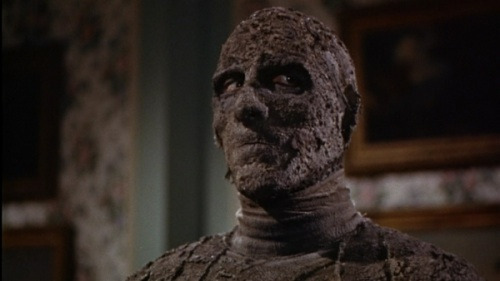
1. Christopher Lee, from The Mummy (1959).
This was Hammer’s first foray into the Mummy franchise, following their agreement with Universal. In a way, it feels like a sort of crossroads between the slow, looming, creeping menace of Universal’s earlier movies and the more spectacular, action-packed, adventurous spirit of the Sommers films. The story and characters are sort of a conglomeration of elements from the whole Universal series beforehand, taking the best bits from each and combining them into one movie. At first, that sounds like a recipe for disaster, but the combination of excellent casting, opulent cinematography, great effects and stunts (especially for the time), and a well-crafted script described as a combination of “Egyptology and Razzmatazz” makes for a really fun, thrilling movie. At the center of the action is Christopher Lee as the titular Mummy, here given the name “Kharis.” Once again, the Mummy is a tragic lover, who was gruesomely punished for crimes of heresy when he tried to resurrect his precious princess, Ananka. Years later, he is resurrected by the mad cultist Mehemet Bay, who uses Kharis to punish a group of archaeologists who dug up Ananka’s tomb. Covered from head to toe in Mummy makeup, Lee nevertheless delivers a powerful, multi-layered performance. While he lacks the sorcerer-like abilities of either take on Imhotep, he is probably the most intimidating Mummy on a physical level. So much of what Lee does comes simply from the smallest of gestures, combined with the power of his eyes; he is able to go from a dead-eyed stare, to a look of vengeful rage, to a tortured expression of pained remorse and anguished love, all in the span of seconds. The 1959 version of the Mummy is my personal favorite reimagining, even more than the rip-roaring excitement of the Sommers films. A big part of the reason why comes from Lee as Kharis: by far My Favorite Version of The Mummy. (Mummy) Case Closed.
HONORABLE MENTIONS…
Valerie Leon, from Blood From the Mummy’s Tomb (1971).
Long before the “Dark Universe” attempt in 2017, this Hammer production tried to twist the tale by making the requisite princess of the story into the monster. However, despite the title, Valerie Leon’s “Mummy” - Queen Tera - isn’t TECHNICALLY a Mummy at all, so I wasn’t sure how much she should really count.
Jim Cummings, from The Mummy: The Animated Series.
This somewhat forgotten cartoon show was spun-off from the first two Stephen Sommers films, and supposedly takes place in the same continuity. However, in this show, Imhotep has learned how to speak English. Aside from the speech matters, this is SUPPOSEDLY the same character played by Vosloo, and I therefore wasn’t wholly sure how much he should count.
Eddie Parker, from Abbott & Costello Meet the Mummy.
In my opinion, none of the black-and-white Mummy films following the original really hold a candle to Karloff’s inaugural presentation. No matter who wears the bandages and makeup, they just don’t have the same presence or level of character and threat. I give Parker’s Mummy, here called “Klaris,” a free pass for the simple fact that this movie is meant to be a comedy: if the Mummy is a bit of a klutz, at least it matches the tone.
#list#countdown#horror#action#adventure#halloween#the mummy#mummies#mummy#imhotep#kharis#prem#klaris#universal monsters#hammer horror#top 5#favorites#best#film#movies
13 notes
·
View notes
Photo
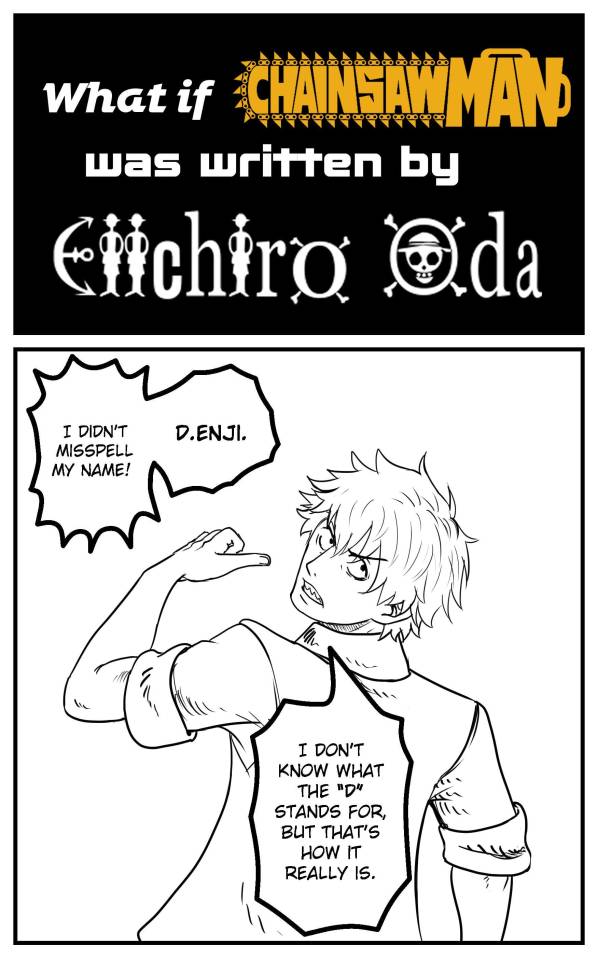

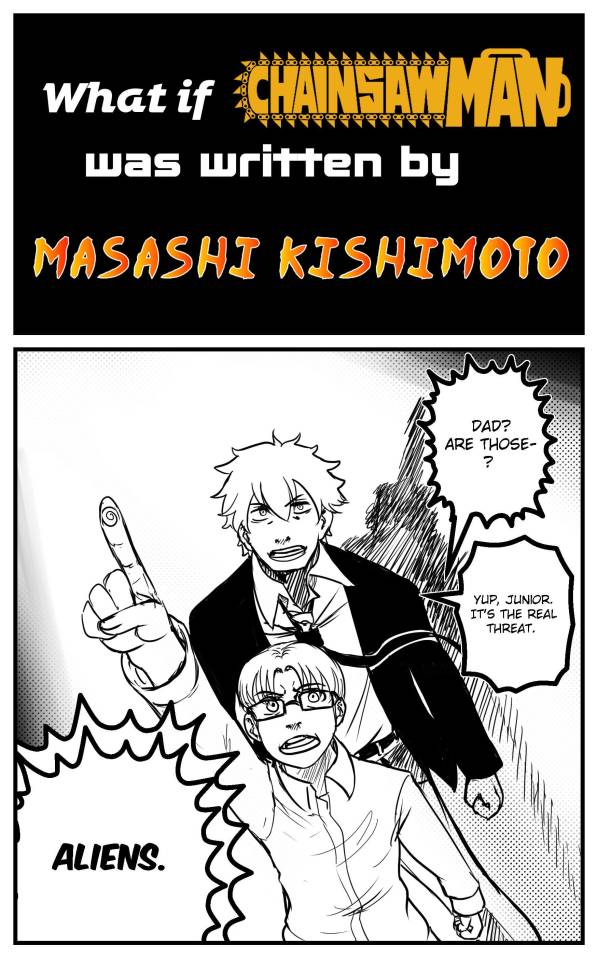
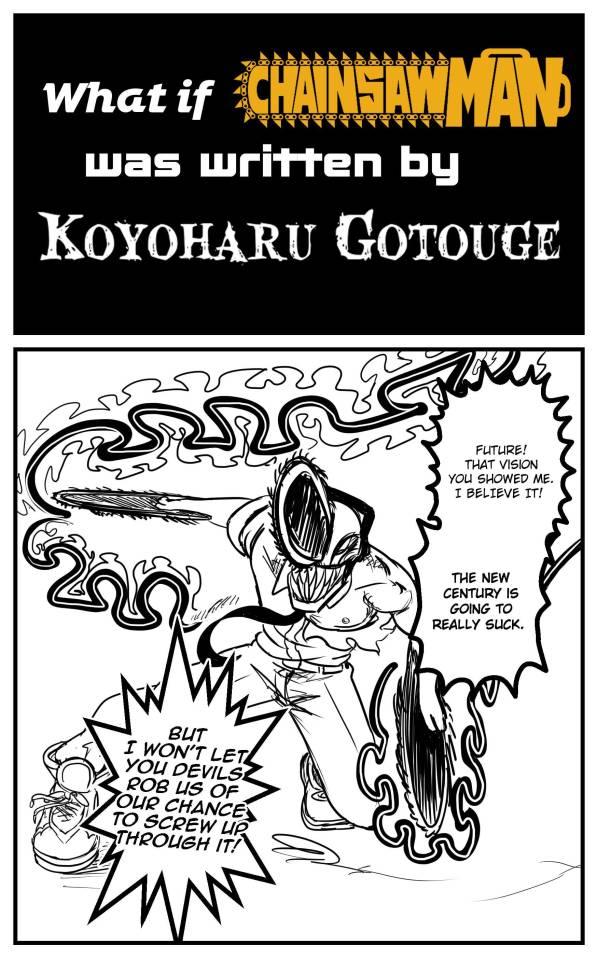
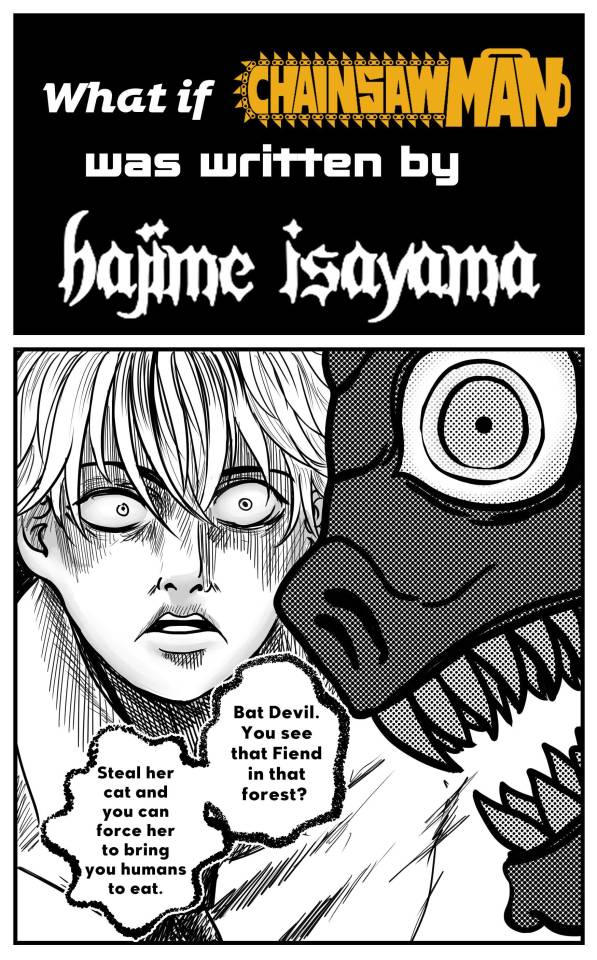
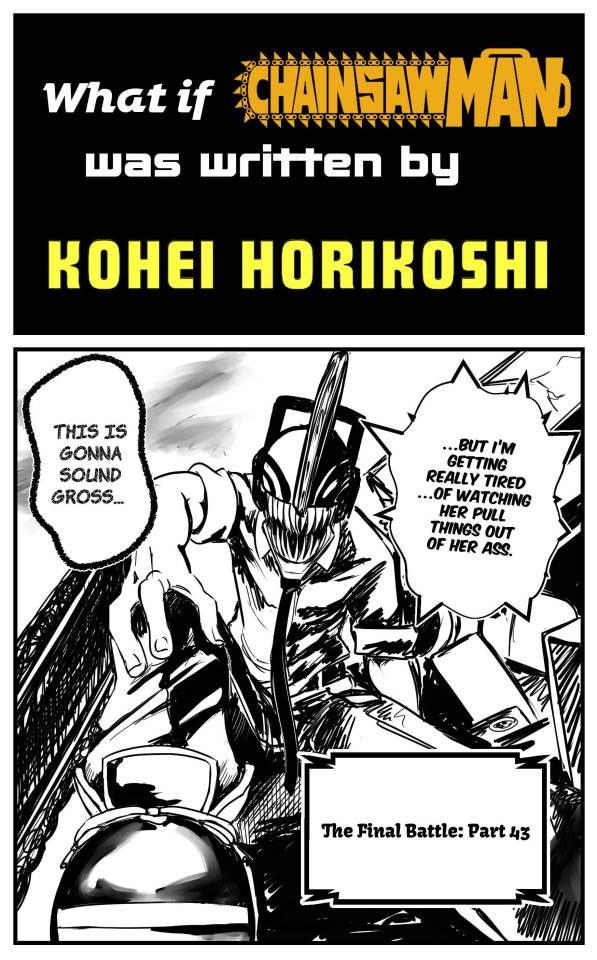
Commentary:
I've seen lots of "in the style of" art pieces of certain manga characters in the illustrative style of other manga, but almost never a "what if this character was written by this author". So I thought I'd write up this set of short satirical fan comics with my frequent collaborator Sha-Y based on that conceit.
The One Piece comic almost didn't make the cut as the joke is really simple if relevant, but it just wouldn't leave my head until I jotted it down. I'm not sure if Law had to be a "D", but I'm just really, really surprised that the Will of D didn't originate in Wano like almost everything else of note in One Piece (Best Swords, Strongest Yonkous, Poneglyphs, etc).
I used to think that Naruto had it bad with bourgeois bloodline privileges until the final arc of Bleach. An alternate gag involved Denji saying Spanish and German words apropos of nothing apart from thinking they sounded cool.
The Naruto/Boruto one might seem hypocritical of me given that I'm a fan of Fate. However, I must point out that Notes. was one of the first stories in the Type-Moon multiverse canon. So I'm in the clear. Also, like Kishimoto, I wanted to do a retread of that pigeon scene from Bolt. That said, I admit to being delighted by Silent Hill UFO endings and even Paul Phoenix's Tekken 5 ending. Plus, I didn't mind the escalation in No More Heroes III. I just feel a little bit bad for the likes of Zabuza and Pain and everyone else in that book trying to have a sincere emotional moment when the root of the whole setting and its woes lies with E.T. eating a Devil Fruit. Anyway, back to the comic, Denji was originally going to wear a t-shirt espousing the phrase "Ska Messiah", but I ultimately decided it would make him look too young, especially since he and his hypothetical son are supposed to be the stars of it.
Demon Slayer was a wonderful book, but it didn't quite click for me until I saw Hotaru freaking out over his swords being lost or damaged, took note of what year the manga took place in, and gave a second look at the manner Muzan was dressed. A last hurrah for the samurai icon, a nation dealing with the dirty laundry of previous centuries so it can enter the open ports of the 20th without urban fantasy horror criminals worsening its upcoming bad decisions and eventual reinvention. Fittingly, Chainsaw Man has the Future Devil, which allowed for Denji to spell out the subtext of Kimetsu no Yaiba in a characteristically churlish yet everyman way. If he survives Part 2, I'm looking forward to seeing Denji fight the Y2K Devil. The Future Rules!
I'm sorry this isn't a "ten years at least" joke. But someone already did that better, so we're doing this old meme instead. The Bat Devil coming out of nowhere to wreck Power's easygoing (if roguish) existence with Meowy always stuck out to me as one of the most quietly nightmarish moments in Chainsaw Man. He just swooped in, snatched her cat while they were napping, and started making dark demands and threats. So, for a laugh, I decided to do what Isayama did with almost every aspect of Attack on Titan and Lelouch it. You thought it was one of the Four Horseman or a Primal Fear, but it was Denji who was behind everything all along!
I'm fairly certain that Horikoshi is just padding things out until he can get MHA to Chapter 400. He could surprise us all. The final (THIRD) battle with All for One could end at Part 41 or even Part 40. I understand given how Oumagadoki Zoo and Barrage panned out that he'd cling a little fiercely to his little superhero tribute that could, but the plot armor of his baddies has gotten so humongous that it can be observed from orbit at this point. If Chainsaw Man has taught the manga world anything it's that just because your main villain has power copying/stealing abilities that could allow a writer to extend a series indefinite with the convenient excuse of said villain just pulling whatever plot extending necessity the author needs out of their rear, doesn't mean that such a plot device should be abused in perpetuity or through, if I'm counting right, five characters (six if you count the one in Vigilantes). The restraint on Fujimoto; some thought Part 1 would go the typical shounen route and double in size just to deal with the big antagonist reveal. Instead, a miracle of good taste and protagonist proactiveness occurred. You love to see it. That said, there's like a sweet spot between 9-minute live-action superhero v. supervillain fights and the final act of MHA for ideal superhuman action length. Maybe we'll find it someday...I should really rewatch Mystery Men this year.
27 notes
·
View notes
Note
Hey! Any tips for an artist who is new to writing? I've been itching to try my hand at writing stuff for my Sonic / Metroid AU, but I feel like I've been overthinking things and am not sure how to direct a plot.
I'm flattered you thought to ask me this, sincerely! Sorry I left it sitting in my inbox for a bit, but it's been a somewhat hectic month for me XD; I also really wanted to make sure that I gave you the very best advice I could, so, all too fittingly, I turned to Queen of Pen and Paper herself, @sally-mun, to help me nail it down just right! I really appreciate her help. And now, without further adieu….
To start with, one of the most important questions you can ask yourself as a writer is "why". Not just in a Logic sort of sense like World-Building, but in a "why THIS story with THESE characters?" sense. “Why is X Character Taking Y Action?” “Why this scene at this time?” “Why do we care?” Because the thing is, your READERS will end up asking these questions too, and asking yourself “why” throughout your process is how you help to craft a story that gives answers to those “why”s in a satisfying way. To be clear, that doesn’t mean you have to get hung up on every last little detail; some things are better left unsaid or implied. But the important stuff? What motivates your characters, what shapes your story? Those answers, you need to make sure are included in the story.
So this is a drum that @sally-mun beats a lot and which I myself have learned to advocate for: Outlines are your friends! Do not be afraid to lay things out in a non-narrative format before you really start delving into the actual Writing of the story! It is, in fact, a great way for you to achieve a lot of the goals/tips we’re talking about here without necessarily having to expend all the effort and energy that goes into Properly Writing A Story, with the added benefit of helping you keep your thoughts straight without having to simply rely on Memory. That's not to say it's a no-effort short-cut, just that it is in fact a good way to really test out your ideas and give yourself the strongest guidelines for what the story itself will be before you commit to The Full Press, so to speak. HOWEVER…
…outlines can, do, and indeed should change over time! Don't get too rigid in your planning. Having some sense of where you're going is good, especially if there are any particular Themes or Emotions you're looking to tap into, but you can often surprise yourself with how a thing plays out once you write it VS. what it looked like when you conceptualized it in your head, and being willing to play off of the Actual Writing instead of holding too tightly to that original plan can often lead you to even better places than you initially planned. Keeping an outline can thus be a useful way for you to respond to those changes, a means of Going Back To The Drawing Board rather than having to Reset to Zero every time your story surprises you.
I've personally found a good way to pass the smell test of "is this working?" is to try and look at it from an Audience Perspective. That is to say, if you were the person reading this story, how would you like this choice in how the story advances or the style in which it's been rendered? Getting outside of your own head like that, in my experience, can really help put things in perspective, and help you to re-evaluate whether the story is shaking out in a way you like, even if it isn't necessarily in the way you planned. Admittedly, this can be a lot easier said than done, so a helpful way to get that Outside Your Head point of view is in reaching out to Test Readers to get their feedback, preferably one who doesn’t have a lot if any pre-existing information about your story so as to keep their viewpoint more objective. Over time, you might learn to better take that role on for yourself, but even if you do, Test Readers can still be very helpful, and maybe more importantly, even if you don’t, there’s no shame in continuing to use Test Readers, ever.
Lastly, especially if you're just starting out, don't be too harsh on yourself about things like, say, Word Repetition or Grammar. Be mindful of those things as best you know how, sure, but at least in terms of just getting something down, I personally have found it more beneficial to just Do and then go back and see if you can clean it up on a Technical Level later, because something tangible and on the page is usually more helpful to making Forward Progress than The Idea In Your Head. Indeed, something to keep in mind is that writing and editing are ultimately two distinct processes; it’s common among early writers to try and do both at once, but this can ultimately lead to things just getting locked up. Editing is best remembered as the thing you do after writing.
5 notes
·
View notes
Text
Scottrospective Part 7 :LONG OVERDUE FINALE: Scott Pilgrim Vs The World Film!
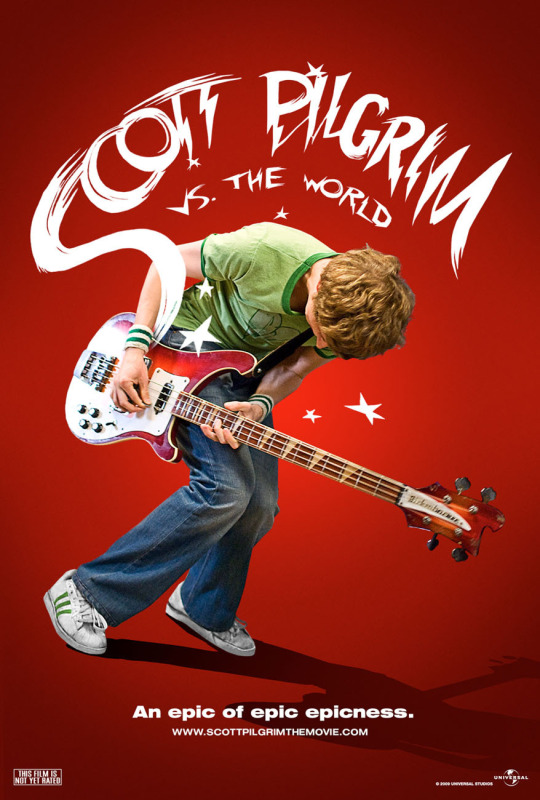
Hello all you happy scottaholics! I’m Jake I review stuff and today marks the end of a yearlong journey thorugh the precious little life of one Scott Pilgrim... and my 30th birthday. Go me. For those just joining us since December 16th of last year, my birthday, i’ve been reviewing all 6 volumes of Brian Lee O’Malley’s classic epic about an aimless 24 year old slacker who finds the girl of his dreams and has to both grow up as a person and punch her 7 evil exes into coins if he wants to stay with her. Packed with great art that only gets better with each volume, one of the best casts in comics with all time faviorite characters of mine like Kim and Wallace, and some of the best jokes and action in the buisness, this series is still loved a decade after it bowed out for a reason. If you want to se the ride so far
LINKS TO EVERY PIECE OF THE RETROSPECTIVE ARE RIGHT HERE IN ONE NEAT PACKAGE.
So while I COULD have just ended with Scott and Ramona x slashing gideon and riding off into the snowy banks of toronto to live their best lives, I felt it just wasn’t complete without one last major piece. One last ride to see another take on the story that’s just as loved and in fact likely got even more people to read this masterpiece than they would of had it not existed. This film was something I only watched once but on rewatch I certainly will again and again, a film that somehow compresses four volumes of comic (and the outline of the last two volumes) into two hours, lovingly and painstaklingly remaking parts of the volumes while still doing it’s own creative things with it. It felt like the proper ending to this retrospective.
And that’s part of the reason that, despite orignally planning for it to be part of this.. I cut the review of the game from the retrospective. I still think it’s an excellent game, even if Ubisoft can eat a bag of acid coated barbed wired dicks for a variety of sexually harassy reasons, but while it has plenty to talk about some other time, it just didn’t feel like enough in comparison to the main series and film. I’ll likely throw it up on my patreon with the other suplimental reviews, such as the free comic book day stories, backup comics, and short film made to tie into this one, and if you want to check those out it’s only a buck a month to see exclusive reviews
LINK IS RIGHT HERE I HAVE NO SHAME
TLDR: A great game, just not a work that fit easily into a far more analitcal retrospective. The movie however fits like a glove, though ill still be covering it differently. I usually do my reviews as full recaps with snark and analsys sprinkled in like garlic on some very delciously fattenting bread, but for this flim, having covered a lot of it’s scenes already in a diffrent medium, I felt it was best to break things down more, divy it up into sections that sort of thing. Your still getting what will hopefully be a pretty meaty review it’s just a diffrent format is all.
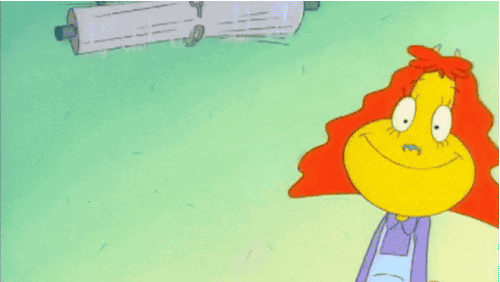
Finally before I got started.. I just wanted to thank all of you. These review shave been easily one of the most read things i’ve EVER done. I get new likes on at least one of the reviews a month and i’m not sure that’ll ever stop. You guys have been great with your feedback, you’ve been great readers and it really does my heart good knowing you love this franchise as mcuh as I do and really enjoy my take on it. So with that out of the way join me one last time under the cut as we go to a slightly diffrent snowy tornot ofor one last slugfest under the cut.
1234!
The Backstory You Don’t Need to Read the Book For:
The story for Vs The World fittingly starts where this retrospective began a year ago: with the first volume, Scott Pilgrim’s Precious Little Life. Precious Little Life was a hit. The company wasn’t satisfied with JUST having a hit comic though. Comics are awesome and all and what their company was known for but you can’t swim around in gold coins like a porpose and burrow in them like a gofer on indie graphic novel money. And since comic movies were in their second boom period at the time (For the record the other ones to me are the late 80′s early 90′s boom caused by batman and the current decade long one caused by the MCU), making a movie was naturally an easy proposal, and given the graphic novels were set as a 6 part story from the get go, that easily lead to at LEAST a trilogy if not more, meaning if the film took off they could get franchise money on top of their scrooge mcduck box office.
Brian Lee O’Malley was naturally less enthuastic. While the period DID have some really good comic book movies (Mystery Men, the first two x-men (if directed by a grooming highly unstable monster), the first two spider-men, the first two blades) we also had things like Catwoman, Elektra, the THIRD spider-man, x-men and blade films, so Brian being a bit trepdatious is understandable. He didn’t put up a fight though for the most primal reason of all:
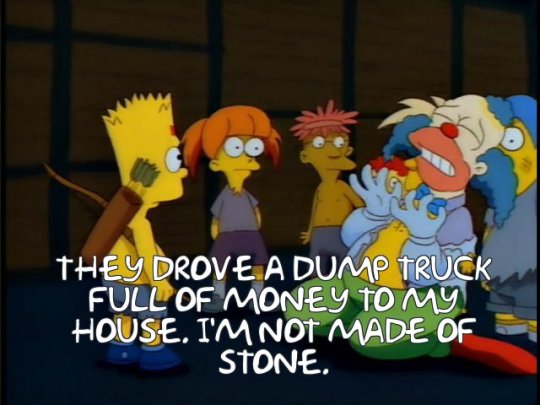
As Brian himself put it he was a starving artist at the time, as the series had JUST started and wouldn’t be the reliable residual check he could live off of for the rest of his life it’d become quite yet. So even if the film wound up an awful, lifeless action comedy by a director he hated.. it was money he badly needed. It also REALLY makes DC and Marvel, and their respective corprate overlords, look WAY worse when theys till won’t give out those sweet residuals to creators, work for hire or no.. while Oni, a much smaller less compitent company.. had NO issue doing the same for someone way less established than some of the people Marvel’s fucked over. I didn’t know it was POSSIBLE to make Disney look worse, lord knows i’ve never held back and I rely on them for a portion of my own paycheck and fanbase, but here we are.
Thankfully Universal, who optioned the rights, picked the exact right man for the job: Edgar Wright, himself at the time incredibly fresh faced and having just had his own first major success with Sean of the Dead, a film I still haven’t seen and you may freely boo me for. I’m LONG overdue on that one despite utterly loving Wright’s other works i’ve seen (For the record those would be Hot Fuzz, This Film, Baby Driver and Last Night in Soho, all certified classics and genre touchstones in my eyes). Funny enough Wright was already a fan, having gotten a pre-release copy while working on Sean, and glommed onto doing it, citing, of ALL films Danger: Diabolik! as an inspriation yes folks the same one from the final episode of the original run of MST3K Danger!: Diabolik!, mostly in making sure the film wasn’t even really reality. I’ll get more into how he pulled this off in a moment.
Wright and O’Malley got along greatly over the long preproduction work for the film, with the two admitting on their commentary track to sending each other mixtapes first. On the same track Wright also admitted to stalling the film slightly so he’d have more to work with, but I can’t blame him there. The first volume is neat and is even adapted prettty much virbeatem.. but there’s just not enough material there for an entire film, and it’d also mean if the film failed we’d never get adaptations of the rest of the work, something Wright smartly sidestepped by simply making it once complete story.
He also poured a LOT of love for the works into it: he outright admitted to making sure all the costumes were book accurate, something I didn’t realize but now can’t stop noticing, the framing was similar to the comics, and that the film actually shot at a lot of locations featured in the book like the park Scott and Ramona go to for their first date and Casa Loma, even using the same neighborhood O’Malley’s rathole apartment Scott’s was based on was in for location shoots. It’s very clear Wright wanted everything pitch perfect and succeeded. Gotta love this man.
For the music they orignially planned to have Sex Bomb Omb be cut off before singing every time.. but once they got Beck of all people on board to do the music that was a non-starter. They also got a song from Radiohead, had broken social scene write the crash and the boys song (wanting a diffrent band for each in universe band, a nice touch) and most intrestingly of all from Metric, who as I went into in the volume 3 review was the basis for Clash at Demonhead with lead singer emily haines in paticualr being the model for envy, contributing one of their b-sides they felt lapsed into accidental self parody which worked perfectly for a patische of them. Their only caveat was to put their version on the soundtrack instead of the one with Brie Larson, which we only got a decade later with this year’s anniversary version of the soundtrack. But I can’t really fault a band for wanting their version on the soundtrack.
We’ll save the cast for in a second, but as you can tell tons of love, effort and hard work went into this film. And that naturally resulted in box office right?
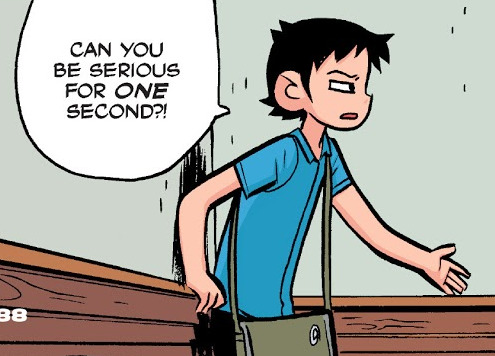
Yeah as you likely know.. the film tanked. And as much as I absolutely love it and the series it’s based on it’s pretty easy to see why: For starters the film stared Michael Cera. I feel Cera is perfectly cast and a damn talented actor.. but at the time the public saw him more like this:
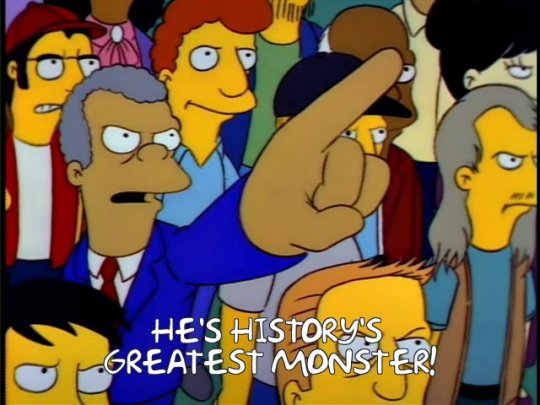
See like many stars who break out over one movie, in this case superbad, Cera got typecast bad in doey eyed slacker type rolls. As such to many it came off as yet ANOTHER one of those, instead of one that honestly , intetionally or not, deconstructs that kind of character and gives cera more to work with. The other problem was audience: It’s an indie film that also involves video game styled punch ups. While easy to sell in comic form since indie comics are built on fiinding a niche audience and letting it grow from there, for a wide audience it was likely a harder sell to watch an actor they were already growing tired of punch people in what was essnetially a musical just with fights instead of songs. As such the marketing was decent but really dind’t know WHO to sell it too: gen x kids who got the deep cut game refrences? current teens who loved cera’s work? This photo of dave collier?
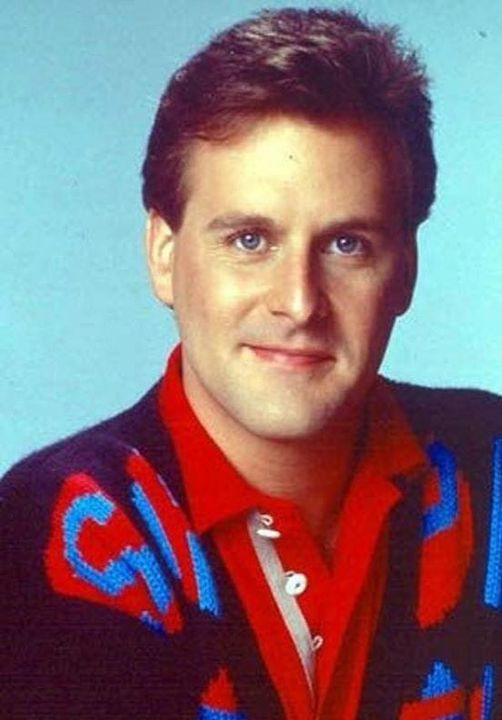
Thankfully the film is easily one of the biggest cases of vindicated by history i’ve ever seen: like many a film home video was VERY kind to Scott Pilgrim, making it easier to share with people who’d be reluctant to see it theatrically and letting the film’s quality speak for itself. Add in the fact the super talented cast all went on to bigger things, meaning fans seeking out their past works would inevitbly stumble on this one and the film has only grown and grown in popularity every year since and rightfully so. The only film I can think of that had a bigger second life like this was the Thing, which went from critically panned for.. some reason to rightfully seen as one of the best horror films period. Also I now want to see scott fight the thing.. not the john carpenter one the fantastic four one. watching ben punch our boy througha wall is just inherently funny to me for some reason.
So overall a well crafted journey here that while it had a bumpy landing has ultimately ended up happy. So with how we got here settled and squared away le’ts look at what we got here:
The Wright Stuff: You’ve already heard me sing Wright’s prasies quite a bit in this article..
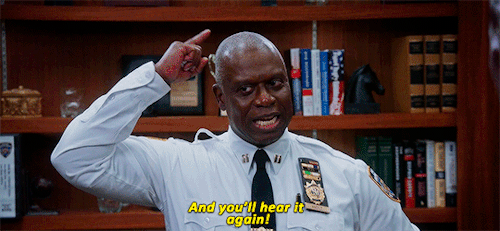
As the film would not be the same without him. One of Edgar Wright’s biggest strength is his visuals: quick cuts, gorgeous intresting shots, and expermenting with the format to tell whatever story he’s telling the way it NEEDS to be. As such SPVTW might be one of the most comic book looking comic book movies that ever comic booked.
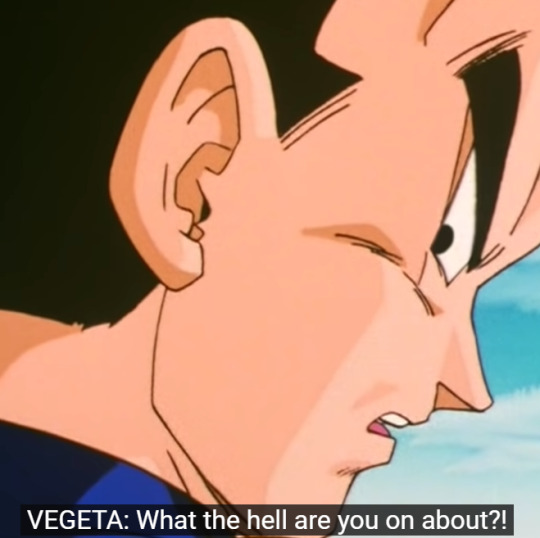
What the hell i’m on about is that Wright often frames the shots like comic panels, trying to keep focus on one thing, still uses text on screen. He said in his commentary he wanted it to feel like reading a comic and succeeded, getting the feel of O’Malley’s own unique style down pat. Two of Scott pilgrim’s most notable style bits, the big bits of text that show up for transitions or gags such as this
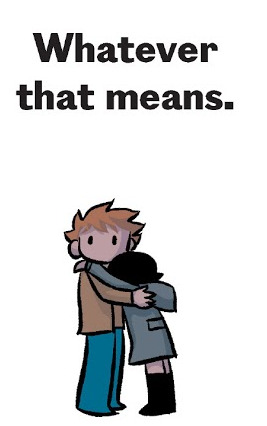
Or my beloved little caption boxes that give a characters name, age and some funny bit of text both make the jump to the film, using Bill Hader’s narration for the former when needed. Often it’s hard to translate visual elements like that to screen for comic book adaptations like that, but Wright makes it look effortless.
The fights keep this too with the wavey lines, said outloud sound effects and what not seen in the comics coming to the screen, giving the fights a nice dynamic feel that no other film sense has captured. Their fast paced, frentic and fun, matching the energy of the comics while still letting the actors and their stunt doubles work speak for itself. The actors trained every day for these scenes and it shows, taking the skinny tree of a person that is Micheal Cera and making him look like the excellent combatant Scott is.
As said before Wright went the extra mile to insure the film was accurate to the books and used a mixture of sets and real locations that look like they were peeled right off the page. This also nicely grounds the film the same way the slice of life elements did in the book: it’s still not clearly our world, but the emotional attachment to the cast and the real world settings help anchor it.
And since we’re talking about the cast....
Stacked Actors:
One of VS The World’s most notable attributes is just how PACKED the cast is. At the time most of them were unknowns with only MIcheal Cera really being a bonified star. But as proof of how much of an eye Wright has for talent, the bulk of them would go on to bigger and better things, with some being bonafied supestars now. Not only that a lot of the character changes, for better and for worse feel dependant on their performances. While Wright certainly wrote everyone well, without the cast really selling it it woudln’t have sizzled the way it does. So i’m combining my examination of what changes the characteres went through in the adaptation process with a little bit of “where are they now” for funzies.
Starting us off we have our hero ladies and Gentleman Scott Pilgrim. Scott is played by Michael Cera and as outlined Cera was the big name of the cast.. and also quickly had his career burn up due to people getting tired of him. As such it’s not a huge shock his career since has mostly been smaller rolls, with the more notable ones being a return to his star making arrested development roll for some mediocre followup seasons and vocing robin in the lego batman movie, which slaps. He seems content just doing work here and there and as long as he dosen’t go away entirely i’m fine with that. I feel the backlash was overblown and Cera is a talented person but I can’t blame him for not wanting to put up with that shit again.
Scott here is even more socially awkward than the comics. Which if you’ve been following this retrospective.... is a tall order.
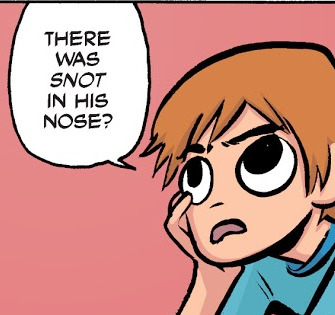

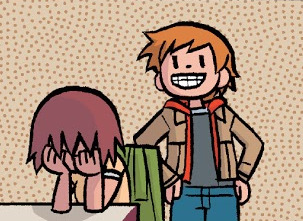
It feels less like this Scott is actively repressing the bad shit he’s done or his shitty behavior and more he just dosen’t get he’s fucked up until his actions smack him in the face in the last act. Scott in the comics wasn’t malcious or intetnionally dickish either, but could get pissily defensive in situations he had no right to be...
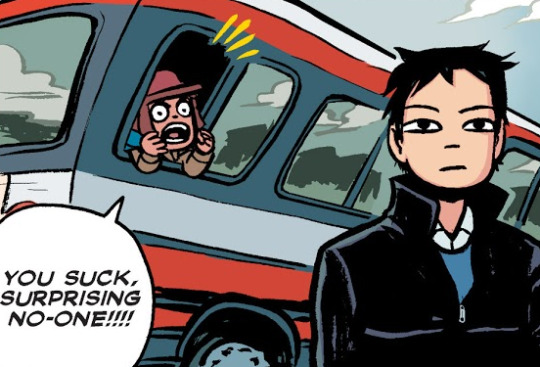
While this scott seems less manic and more just confused a lot and half there. This works fine though: without the Nega Scott plot twist, as it might or might not have been in the notes Edgar Wright got from o’malley, having Scott be a little shit just woudln’t have worked. Here he can still grow, realizing his actions hurt people and how much he truly cares about Ramona, which works better for the film’s overly compressed timeline. After all this Scott’s only had a week to really change as a person. In contrast Comic!Scott had a full year of perosnal growth, mistakes and a whole life with Ramona. It makes more sense his Journey is a bit deeper. So overally Movie!Scott isn’t bad, just a bit simplified from the comics to make him work better.
And since we brought her up Rammy is next. Ramona is played by Mary Elizabeth Winstead. Winstead was a small name before SPVTW, having worked in Final Destination and Death Proof, but Vs the World would be the real start of her rise, going on to do tons of work since. The most notable for my nerdy ass are 10 Cloverfield Lane, the only one of those films i’ve seen and probably will ever seen and a truly suspensful masterpiece, and Birds of Prey as Huntress, a role she badly needs to reprise at some point even if they don’t give the film a sequel. She also did a great turn in Season 3 of Fargo, even if I ended up bailing on said season due to it being pretty bad. She was not though.
As with everyone, Winstead does a great job as Ramona.. but I feel the character gets short changed by the film. Film ramona is more emotinally guarded which, while a big part of Ramona’s character, wasn’t really ALL she was. She had moments of snark, flirtness and other stuff. In contrast Film!Ramona just seems to be stoic almost the entire film and dosen’t really get to grow as a person, much like scott but even less satisfying. She feels like less of a character here, just the aloof cool girl scott thought she was and got a crush on, instead of learning she was a real person with feelings and emotions like the comic. And while again Wright only had three volumes to work with, volumes 2 and 3 have Ramona open up just enough to show off her personality and he could’ve easily given her her own. Instead she feels more like an afterthought in a film that has her as one of the main characters.
The reason for that is wrapped in our next character so onto Knives. Knvies is played by Ellen Wong, who sadly hasn’t soared to the heights of some of her costars which is a shame given she is wonderful here and was utterly awesome on GLOW, her other major role to date. God I hope we get a finale movie for that at some point. Wong is fantastic in the role and Knives innocence and later slide into ax crazy both play well. Knives isn’t changed MUCH from the comics.. but there is one rather big change that does effect the story quite a bit: her relationship with Scott is taken a bit more seroiusly.
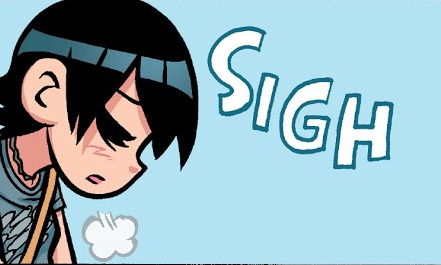
This is a massive mistep. In the comics the relationship was INTENTIONALLY shallow, as Scott doing this was rightfully seen as a creepy way to avoid his feelings. Here the film plays it as it’s OTP: he and knives fight gideon together and were SUPPOSED to end up together before test audiences rejected it. It just MASSIVELY misses the point in a way i’m baffled someone as skilled as wright can do, but here we are. They even tried to ease things by having the age gap lowered by a year.. but it dosen’t really fix it. 5 years, 6 years, he’s still dating someone way more naive as a way to sooth his own emotoinal wounds. It’s still fucking wrong. It’s one thing to ship characters who are both teens and have maybe a one or two year age gap or two adults who could have as much as a decade or so between them. But with Scott and Knives.. i’ts someone more experinced dating someone as an ego boost. That SHOULDN’T end well or be painted at all well. I shouldn’t even have to say that it sounds obvious but here we are. This is far and away the weakest point of the film. It dosen’t RUIN it for me, but it’s one of the few things that steps down from the comic and isn’t just a consequence of not having all the volumes at the ready or the compressed storytelling. This is squarely Edgar Wright’s fault.
So just to make it an even trilogy of mishandeling characters, let’s talk my girl Kim Pine, played here by Allison Pill. While I haven’t seen much of Pill’s work since Scott Pilgrim she’s had a steady career, mostly in tv on shows such as American Horror Story, The Newsroom and currently Star Trek Picard. She’s a fantastic actress and not only matches Kim’s look perfectly down to the freckles, but gets her sardonic attitude and complex relationship with Scott through well in dialouge. The problem is that Pill really dosen’t get to do much. Granted I know i’m not the most objective person when it comes to wanting to give Kim more screentime.
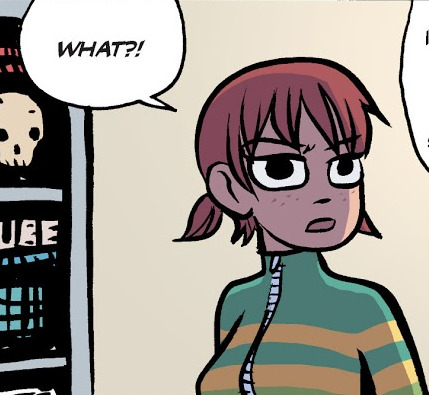
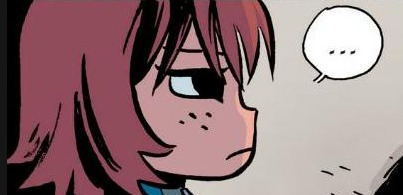
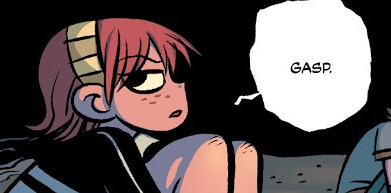
But you have to keep in mind Kim is the tritagonist of the books: She’s just as important as Scott and Ramona to the story and whiel this truly dosen’t blossom till the final two books, she still averages one major scene a book and has a major say in some of the side plots in paticular having a LOT of tension with Stephen over his ignoring live performances and actually being a band in favor of working on the album. In contrast the film has her as easily the least prominent member of Sex-Bomb Omb, with Stephen and even Neil getting more screentime and jokes. Granted both are fantastic in the film, we’ll get to that, but it’s really sad that the third lead of the books is relegated to being the sidekick’s sidekick. This is part of WHY I feel we need a longer form adaptation: this movie is awesome.. but there’s a LOT you could do with Kim, Wallace, and others that the film simply didn’t have time for and the books didn’t get around to doing.
Speaking of the handsome devil, Wallace is played god’s gift to this movie Kirean Culkin. This film made me a fan of the guy, who also as a fun fact played Ralphie Parker in the christmas story sequel My Summer Story that I still need to watch and specfically saught out in part because he was involved. Naturally right now his biggest success is being on Succession, a show I probably will never watch as it’s not my forte, but do appricate for sharing his gift with the world.
Kirean is pitch perfect as Wallace, getting his nice mix of sarcasm, flamboyance and deadpan all wrapped into one. He’s far and away the stand out of the film, having tons of it’s best moments, including brand shiny new dialouge to the hilaroius sequence with Crash and the Boys, even giving us a just as good retort to “We Hate You Please Die” with “Great I love this one!”. Wallace as you can tell isn’t changed much he just has two slight tweaks: there’es now a running gag where he calls stacey even when dead asleep or having JUST talked to scott a minute ago, and he’s now dating Other Scott instead of Mobile, as well as having an escalating number of partners in his bed at the same time as Scott plantonically sleeps next to him, a nice way to condense the runner from the comic of Wallace throwing Scott out to have sex in their place on a regular basis.
Stephen Stills is played by Mark Webber, whose done.. stuff since. Yeah not EVERYONE on the cast went on to do stuff and while Webber’s still acting, he hasn’t done anything huge I can spot apart from being on SMILF and dropping out of doing the series Stumptown post pilot due to creative differences. And that is a shame as Webber elevates Stephen from the dillhole he was in the comics to a stressed out wreck serious about getting a record deal, and just generally fun to watch as he breaks down. Him scooping up the coins at the end was also a nice touch. The character was nicely retooled into comic relief and whlie not much like his comics counterpart anymore, that’s for the better.
Johnny Simmons plays Young Neil and has just kinda shown up here and there since the film much like Webber, which is a shame as Simmons is easily my second faviorite actor in the film next to Culkin. Neil here is completely diffrent, being more peppy and deeply into the band instead of the stoic mophead he was in the comics. Simmons got the role due to using the “you punched the higlights out of her hair!” bhit for his audition and his extra bit of ham to neil makes the character really stand out, esepcailly since the sex bomb omb crew are really shoved to the side for this adaptation outisde of the fifth ex fight. It also makes his relationship with Knives more palatable as he comes off a b it more naive, and thus way more manipulatable. I also headcannon that like this neil , comics neil can play the bass and joined shatterband eventually.. that part’s not really relevant I just wanted to mention that.
Scott’s kid sister and concisence is played here by Anna Kendrick, whose one of the breakout successes of this movie having gone on to do dozens of films since this, most notably starring in the Pitch Perfect and Trolls franchises but having done PLENTY outside that. Naturally with someone this talented she plays Stacey well even if Stacey’s roll is even more reduced, never getting to meet ramona, though she does get a nice emotinal moment with Scott towards the end.
Rounding out our supporting cast we have Aubrey Plaza as the bane of my existence Julie Powers. Plaza is an actress I deeply admire having been part of parks and rec around the same time as this, and having gone on to do work on and off since, including the criminally underrated film The To-Do List. So i’ts not a huge shock she takes Julie from a character so odious I prayed for god to strike her down for 6 volumes straight, to someone tolerable. She’s still an ass, but Plauza has a talent for making asses entertaining, phrasing, so julie’s at least ENTERTAINING HER. She’s also kept to two scenes, so she dosen’t wear out her welcome and it helps one of those scenes, the whole censor bar bit that’s fully wright’s baby, is easily one of the film’s best and most well remembered gags.
Finally before we can get to the exes, but not quite in supporting hence putting her here, we have mrs. Envy Adams, played by Brie Larson. While it took larson a bit, she became a massive star thanks to the film Room, a truly stunning and heartwrenching little film, and of course playing Carol Fucking Danvers in the MCU. Fun Fact: I honestly didn’t realize this was the same actress till it was pointed out. She does a good job as Envy, with the phone scene and the truly showstopping Black Sheep Scene both being iconic, though Envy, like most of the female cast, is given the short end of the scott pilgrim stick that dosen’t have his face on it. Due to her volume being barely featured, she’s mostly there to serve as todd’s cheerleader and gets a great closing bit. She’s still memorable as all hell as Larson gives her a nice, icy vibe that fits the character perfectly with a well constructed stilted way of speaking that feels like Envy is trying to act out every word and can’t even run into an ex without making it into a performance. Well acted, just not as deep a character. Pretty much this film in a nutshell.
Okay starting us of with #1, we have Matthew pattel played by Satya Bhabha. Bhabha hasn’t done much since, matty is pretty much the same though this time he gets a fucking bollywood number that slaps, Slick. It’s not long sadly, but damn is it funky.
Now onto #2 with Chris Evans as Lucas Lee baby! No need to look up this one as I usually make mine marvel, meaning I know both his major marvel roles: years before this he played Johnny Storm in the Tim Story Fantastic Four films and honestly did a good job in my opinon, one of the only three characters with proper casting the others being Ben, with Micheal Chiklis having set a high bar for whoever calls for clobberin time in the mcu, and having Stan Lee play Willie Lumpkin, the ff’s mail man. Yes they have an old man mail man as a supporting character.. he also dated Aunt May for a while, when you ‘ve given mail to people who can stretch, set thigns on fire, create whatever they imagine nad clobber, and bang peter parkers aunt then you can judge. He then went on to play the star spangled man with the plan something that actually got spoofed at comic con as he was too busy with the first avenger to attend, so Micheal Cera dressed up as cap in a goofy muscle suit outfit. He’s still a certified star even after leaving the mcu, going onto knives out where he told us to eat shit and we ate not one iota of shit.
So Lucas is almost completely diffrent here. In the comics he was a calm chill dude, gladly talking to scott, only kicking his ass because he had to and offering to take a bribe. He only really got ready to killl the guy when Scott called him a sell out and then died the same way he did here. In contrast Lucas here is throughly a sell out: a smarmy mugging dick who has his stunt doubles fight first, though is still perfeclty nice to ramona. Evans plays this version perfectly and honestly.. I feel it’s an improvemnt. Whie I have nothing against book lucas, the movie one is just so enjoyably hammy, from his growly tone to his mugging for the camera and his death is even more hilaroius as a result as it fits this lucas more to want to show off.. and end up dying from the velocity of trying to show off.
#3 is our good old Akira Himbo great disaster stopping cleaning lady on monday pal Todd played by Brandon Routh who at this point played superman in “Superman returns”. Poor guy. Thankfully Routh’s had a much steadier superheroing career in tv, playing the Atom in the Arrrowverse. He also played Tsar Nicholas the Second in a movie last year.. the fuck?
Anyways, Todd is, like most of the cast, a bit diffrent. In the comics he’s a bit more abrasive, gladly saying he can do what he wants because he’s a rock star, serving as an evil scott basically doing a lot of what Scott did, cheating being a dick to people, but because he CAN rather than because he needs to grow as a person and dosen’t realize he’s hurting people. Here he’s just a bit of a quite broey dick, as his screen time is cut down massively like Envy’s, though once again they do give Scott more agency in his fight, having him cleverly trick todd into eating dairy instead of Todd doing it “becauase i’m a rock star!”. So while I feel he’s less of a character, and it’s mildly disapoitning, it still works.
#4 is good old Roxie Richter, the reason their called “Evil exes” and not “evil ex boyfriends”. Roxie is played by Mae Whitman who while not a mega star had already made a name for herself at this point, having voiced Katara on Avatar: the Last Airbender and played Anne (her?) on Arrested Development.. who ironically was Michael Cera’s love intrest. And given Wright was an AD fan, this bit of meta casting likely wasn’t a concidence. Whitman hasn’t slowed down remotely since this film, having done long stints on the excellent show Parenthood, what I heard was an excellent show Good Girls, and currently playing ANOTHER iconic animated character with Amity on the Owl House, and yet another angry lesbian. Whitman herself came out as bisexual this pride, and I couldn’t he happier for her what a talent.
Roxie isn’t much diffrent here, still combative, and at most a bit angrier, though with good reason as Ramona dismisses her as just a phase.. and while in the comic Roxie brushed that off (and given they later made out a bit, she had reason to) here she’s GENINELY and deeply hurt as she could be. I mean killing her boyfriend over it is a bit much but being pissed at ramona isn’t. She’s one of the few exes in either medium that gets a decent amount of depth and i’m glad it was kept. Her fight is changed slightly, now being more with ramona, modeled on Ramona’s awesome fight with Envy in volume 3. This is for a reason as Wright consdiered making Envy replace Roxie but thankfully backed off. And while Roxie’s arc is cut down slightly the major bits, scott accidnetly punching her in the boob and preparing to die obviously, i’m a little bi-furious, and scott’s slow realization what’s happening all still made it. All in all out of the exes she’s easily my faviorite of the film versions.
5 and 6 with Shota and Keita Satao two japanese actors who haven’t done antyhing in america that i’m aware of since and their wiki pages are in japanese so moving on. They do okay, they just don’t get to say anything really or emote so I can’t reaally judge their performance.
And that is an issue with the twins here. THeir just.. not characters. It’s clear Wright didn’t really have time to sink into volume 5, going with an earlier idea of the fight. The fight itself is utterly gorgeous and awesome, using cg that still shockingly holds up for a fucking sound duel between both sides, amps face to face. It also gives Sex Bomb Omb a truly rocking moment in the fights, as most of the time in the books they were more color commentators than anything. Only kim ever got a sigfigant roll in any of the fight scenes, though she made the best out of it. So the fights good.. but the twins as characters are just there to do that, get wrecked and lead into the last act, having Scott loose everything before getting pep talks from his sister and wallace to go fight for what he wants. The actors aren’t bad but instead of having them talk in japanese with subtitltes since they didn’t speak english they just had them not speak or really have a ny personality at all and it’s disapointing. These guys deserved better.
Finally we have the grand white douche himself Gideon Graves. What a dick. Played to smarmy perfection by Jason Schwartzman. Schwartzman has lived an amazing life and I just found out this minute he was drummer for phantom planet. Those guys could really wail. He’s done fine for himself since the film, most notably appearing in every wes anderson movie the guy can stick him in. And given i’m a huge wes anderson fan and jason is fantastic, that’s dandy to me.
Gideon’s roll here is about the same, a mysteroius shadow on the procedings though not built up as much, though he does sponsor a music contest our heroes take place in throughout the film which is a nice touch. Otherwise he’s still a possesive dick he’s just played diffrently by the script. In the book he is an absolute monster, a smarmy possesive nightmare who keeps women in jars, kills ramona for defying him, and gladly brags about hiding a sword in a dress because “that’s just the kind of guy I am!” Here he’s still a dick, but more in the classic final boss style more bradacio and hammy than slimy. His entire final act plays diffrent sooooo that leads us to our final portion of the review. Another Story Entirely:
At last we’ve come to our final section the plot of the film... as I said i’m not doing a full synopsis but I will break down the non-character related bits of it, what was changed and what works and what dosen’t.
The first 45 minutes is a straight up adaptation, almost page for page, of Precious Little Life, simply with a few lines cut here and there or changed up, as well as an added scene of Scott playing Ninja Ninja Revolution with knives to better establish their fighting prowess which as you probably guessed is a stuido mandate. The whole thing with Matt bursting in and Scott, up to this point a complete and total fuckwit if a charming one, easily throwing hands is funnier if it comes out of nowhere and once it has you fully just accept this is how this world works.
The rest though.. is a bit of a hurricane as what ends up being over a year in the comic.. is compresssed into a week. And while I don’t mind compressing the time scale a bit, this is way too much. By shortening things that much it makes the relationship with Ramona less meaningful and makes his decleration of love at the end come a bit too soon for me. The Power of love was something he EARNED in the comic, same with the later power of self resepect, born thorugh character growth. Here like everything i’ts just kinda sped up.
The speed doesn’t HURT the movie as a movie on it’s own: the pacing is nice and brisk, with a decent amount of time betweeen most exes, even if the last few come fast and furious, and plenty of character stuff. The characters don’t really change in situation or anything, which while making sense for the shortened timespan, lessens the impact of the journey. It’s a NECESSARY sacrifice as Ed couldn’t pack that much character stuff into 2 hours even if he had all the volumes to work with, but it IS why I prefer the comics. They just have more of an arc to them. Part of why I did this retrospective is it feels like they take you on a complete satisfying journey and all the leads end up somewhere diffrent, minorly or majorly by the end.
I will stress since it could be taken the wrong way, as is the internet’s international past time: I LIKE Scott Pilgrim VS the World. While it does strip back things I like, it gets the tone perfect, the casting is flawlesss, teh fightings are phenominal and the effects are damn fun. Ed had a tall order compacting 6 books, one of which he didn’t have access to, into one movie and did so well, and it’s well loved for a reason. But after revisiting these books for almost a full year and coming to finish this retrospective a year after the original review, I can’t help but notice all the holes in the film. It’s why I want a longer adaptation: this is great, but there’es more to be done, and so much that could be updated for the 2020′s, that I feel it deserves another shot. But this shot was a damn good one and if it’s the only adaptation we get.. i’m happy with that. It’s colorful, wonderful and it’s Scott Pilgrim. I couldn’t ask it to be anything else.
I could end the review here but hey, wouldn’t be doing my job so yeah: a LOT of the slice of life stuff is cut, and the band performacnes are stremlined into a battle of the bands contest held by gideon. And that’s what ends up casuing the film to pivot massively in the last act, as again Ed didn’t have access to more than an early draft of the script for Book 6. So instead he went his own way.
His own way still leaves scott in the same position as book 5: the band abandons him, Ramona leaves him and Gideons at his heels. The diffrence is HOW we get there> The diffrence is execution: INstead of slowly breaking up due to Stephen’s actoin, Sex Bomb Omb ditches scott when he refuses to accept the contract from gideon, having Neil replace him. Ramona also leaves Scott for Gideon leaving him in a bad place. It takes a sweet talk with Stacey, which I really DO enjoy as the graphic novels just forgot she existed because Brian got embarassed about basically writing his sister, not getting that she was still set up as important so ditiching her felt wrong. Wallace also gives him one.. while also telling Scott he’ll probably be throwing him out.
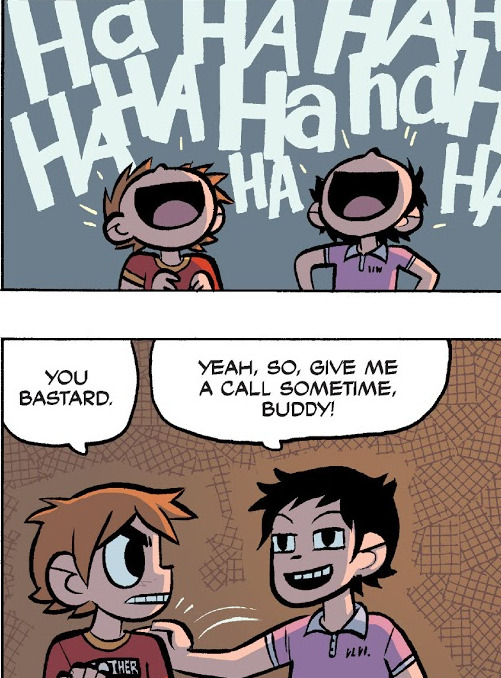
I will say the climax is easily one of the best parts of the film. The chaos Theater here has Gideon in a giant pyramid throne, still getting the vibe of “rich kid asshole treat him as a villian” across. Scott charges him and we get a fun fight with Gideons goons as Scott gets the power of love. But Scott isn’t great at it and then we get a bit change as Knives, who honestly disappears after THEY PUNCHED THE HIGHLIGHTS OUT OF HER HAIR, challenges ramona and we get the films version of the fight from volume 2.. and both find otu Scott was cheating.
The first part is decent.. but what truly makes it is the truly BRILLIANT touch Brian Lee O’Malley thought of. Like the book Ramona talks to scott though here Gideon has a control chip on her.. she literally can’t disobey him. That’s unsettling. But she reminds him of the one up.
In the comic this just brought Scott back a second after he died. Here.. it’s WAY more intresting and really spices things up: Scott essentially starts the level over thus when he revivies he’s back at the gates of the Chaos Theater, with events not yet having happened. And much like any player who has to repeate a level he does it better, remembering to tie his shoes, quiping the guard better and making geninely heartfelt statments to his friends: He apologizes to kim for being a dick (which we get a cute smile for. Aw), stephen for walking out on them and dubs young neil neil and decides he’s fighting Gideon not for ramona.. but for himself. He fights gideon better this time then apologizes to knives and ramona when they show up. While MOST of the characters don’t get as much of an arc scott still get sa decent one, taking responsiblity for his actions and thus winning as a result. It’s also REALLY fun when for the min on fight, which scott plows through this time, Kim shouts “We are sex bomb-omb and we’re here to watch Scott Pilgrim Kick this guys teeth in!” Wish that’d made it into a scene in the books truly great stuff. I just wholehearteldy love this concept and it nicely fits int the worlds video game logic.
The only part I really don’t like about the climax, tha tisn’t tied to character stuff I mentioned earlier, is how Gideon’s beaten: ramona does nothing... while Scott and KNIVES beat him, which sets up the other ending instead and really just robs ramona of any agency: she just stands there while scott and his teenage ex beat up gideon. It’s not really satisfying or fits the plot that well even with the original ending.
What does satsify me greatly...

Is after Gideon’s defeat we get Nega Scott.. and in EASILY the best gag of the film (the window one which I glossed over is also dope), the two square off while Knives and Ramona go outside.. and we hard cut to Scott and Scott laughing like old college buddies, leading to the best line of the film
“Oh we just shot the shit. We have a lot in common actually. He’s actually a really nice guy, we’re getting brunch next week. “
Flawless no notes. The ending also works with Knives getting scott to persue ramona who tries to leave for his own good and we’re left on an ambigious but hopeful note for them.
Final Thoughts:
I feel i’ve said all I need to say about the film: it’s higlhy compressed and while I love the books more.. this is still really fucking good and a godo adaptatoin, and I enjoyed it even more than I ddi 10 years ago when my loving brother took me to an early screening for it. And ironically just as I am now.. I wrote a review for it. Not good, timing and all and lost to the sands of time, but ... it’s kinda nice to come back all these years and do this for real.. and i’ts very ncie all you wonderful people have supported me doing this to the point i’ve GOTTEN to my second birthday on the blog. Thank you all. This retrospectie.. it’s been wonderful> The comic is truly amazing, the film spectacular and both have a place in my heart. I may of complained.. but i’ts because I care. Because everything ELSE is so strong the weaker points stick out like sore thumbs. But trust me if you somehow haven’t seen the movie do: treat yourself.. and thanks for reading.
#scott pilgrim vs the world#edgar wright#Brian Lee O'malley#scott pilgrim#ramona flowers#kim pine#wallace wells#young neil nordgraf#stephen stills#satan#matthew patel#lucas lee#roxanne richter#todd ingram#kyle kyatanagi#ken kyantanagi#gideon gordon graves#envy adams#micheal cera#mary elizabeth winstead#kirean culkin#johnny simmons#allison pill#brie larson#jason schwartzman#brandon routh#chris evans#mae whitman#ellen wong#satya biyahaha
12 notes
·
View notes
Text
Hollow: an ode to Cloud’s regrets about Aerith
I’ve always felt Hollow is about Cloud’s regrets after Aerith’s fate. But after finishing the Original Final Fantasy 7 game, I realized the lyrics outright quote and reference things Cloud says about Aerith in Disks 2 & 3.
So if I was convinced before, now I just can’t see the song being about anyone nor anything else.
I’ve been posting my thoughts about it on Twitter the last few days, but I figured it was worth putting everything together in one single post to illustrate just why I feel this way. I’ll divide the post in a few parts:
What we know about the song
Where we hear the song in Remake
The name of the song
The song lyrics and its ties to the OG (and to AC)
The imagery of the song
Could the song be about multiple people? nope
I’ll illustrate each point with images from the OG and occasionally Advent Children, so beware of spoilers for both! In contrast, there are only a few spoilers from Remake, including one cut-scene from the ending and a scene from Chapter 14.

What we know about the song
The song’s lyrics were written by Nojima and the music by Uematsu. In the Behind the Scenes, Uematsu explains that the song is sung from Cloud’s perspective and gives the vocalist clear instructions to make the vocals fit Cloud’s character.

This was further confirmed on a recent interview, where Uematsu said: “[...] the song is supposed to be about Cloud's inner feelings” (source).
Similarly, Nojima confirmed that one of the two keywords he received to write the lyrics was “told from Cloud’s point of view.”
Even more interesting, however, is the following:
I interpreted [Hollow] as "a ballad for a man who lost something important to him." — Nojima
In other words, Nojima wrote these lyrics thinking about Cloud having lost “something important” to him. In Japanese, the wording is 大切なもの, which means both “something important” or “someone important” depending on the context (comment from the translator).
Both have already been used from Cloud’s point of view, in regards to Aerith.
In the OG, it’s used when Cait Sith predicts that Cloud will lose Aerith. “What you pursue will be yours. But you will lose something dear." In Japanese, “something dear” is written with the exact same wording used by Nojima: 大切なもの

The same wording is also used in Cloud’s cameo in Final Fantasy Tactics, where he’s featured alongside Aerith.
As for “someone important”, Aerith has been described as Cloud’s 大切な人 "important/precious someone” more times than I can count. Like here, for example:
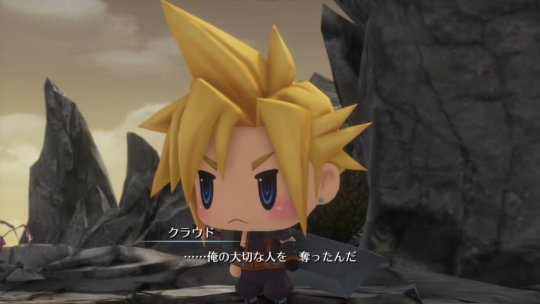
... [Sephirot] took away my important/precious someone.
So just from the wording alone, we can establish a link to Aerith. However, this is far from being the only way Hollow is connected to Aerith.
Where we hear the song in Remake
The very first time we hear the instrumental version of song in Remake is in Chapter 8, called “The Flower of Reunion” in Japanese and “Budding Bodyguard” in English. In other words, the first time it plays is on a Chapter entirely dedicated to Cloud and Aerith.
But even more telling is the very first moment we hear the song. It’s when Aerith briefly separates from Cloud in the Sector 5 Slums. It literally starts playing the instant Aerith leaves the party.

Then, it continues to play throughout the chapter as Cloud & Aerith reunite and do different quests together.
Fittingly, the second time we hear the instrumental version of Hollow is in Chapter 13, as Cloud & the party step into the places that Aerith first showed to Cloud — except that this time, Aerith isn’t with them because she’s been kidnapped by Shinra.
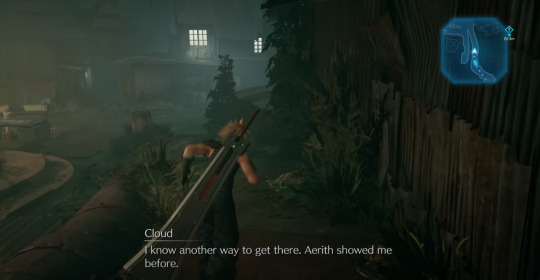
Meaning, Hollow’s instrumental version only plays in Sector 5. Aerith’s Sector.
The last time we hear the song is, of course, in the credits of the game. Where the full version of Hollow plays in full. But I think it’s interesting to think of the moment when the song starts to play.
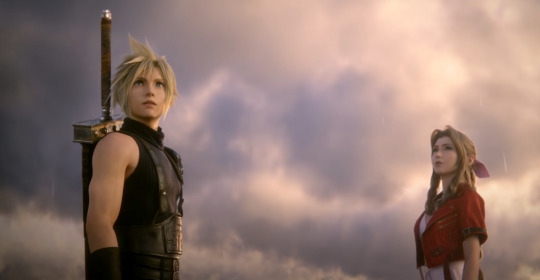
First, we focus on Cloud & Aerith, standing on a barren place as rain starts to fall down on the party (this will be important later). It’s only after this very shot that the camera pans to the sky and Hollow starts playing.
So three out of three times we hear Hollow, the song can be connected to Aerith.
Which makes perfect sense IMO, because everything about the song itself is connected to Aerith.
Including its title.
The name of the song
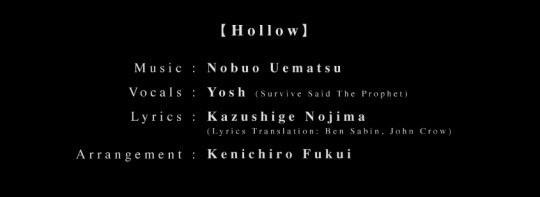
While the song is sung in English, the original lyrics were written in Japanese. The original name of the song was actually 「 空っぽの雲 」 “Empty Cloud”, which then became「からっぽの空」aka “Empty Sky” or “Hollow Sky”. And in fact, the Instrumental version of the song that plays in Sector 5 — again, Aerith’s sector — keeps the Japanese name.
Of course, both “empty” and “hollow” carry the same meaning:

“Having a hole or empty space inside”.
You know what was meant to evoke this exact same feeling in the players? Aerith’s death.
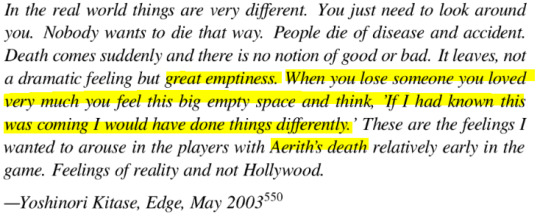
The feelings aroused by Aerith’s death are “a great emptiness” and “If I had know this was coming, I’d have done things differently”.
These are the exact same feelings Cloud sings about in Hollow.
And what’s more, his pain after losing Aerith was recently referenced in the Final Fantasy 30th Anniversary Exhibition with the following quote:
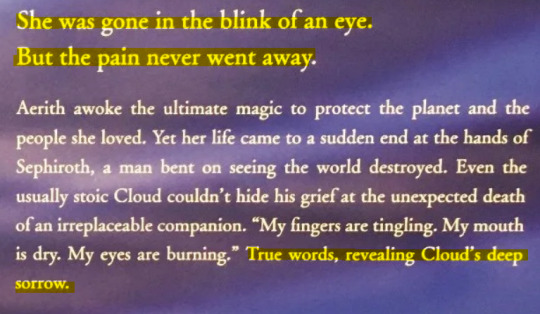
Which takes me to:
The song lyrics & its ties to the OG and to AC
Since the song was originally written in Japanese, I will be using @gurekura’s literal translation as well as the official translation of the lyrics. You can see their original post on Twitter HERE.
I think that when you read the lyrics, it becomes very obvious that it’s written from the perspective of the original Cloud. The Cloud we see in the Original FF7 as well as in Advent Children, among others. So, of course, it’s no surprise that these lyrics perfectly match various scenes.
What’s telling though, is that just as we’ve seen until now, the lyrics are a perfect match for scenes focusing on Cloud and Aerith.
1.

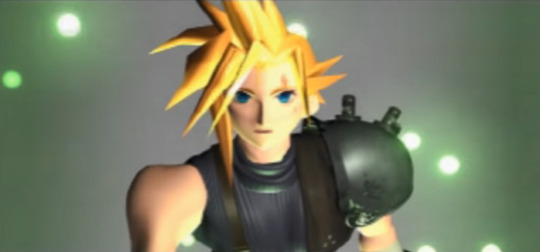

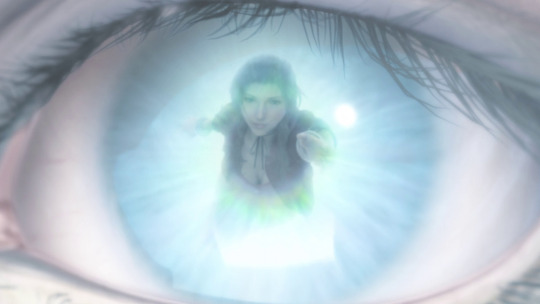
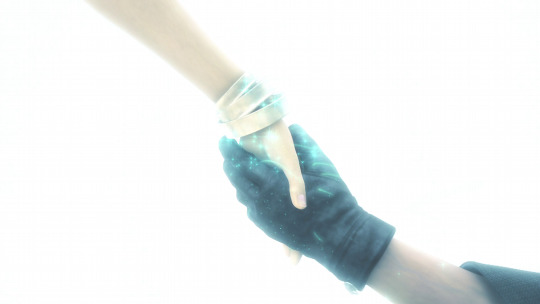
2.

No matter whether you take these lines literally or figuratively, “healing” easily evokes images of Aerith. Who not only is a healer — we even see this in AC, where Aerith heals Cloud of Geostigma — but also reaches out to Cloud as he’s broken by pain and guilt in AC and helps him recover.
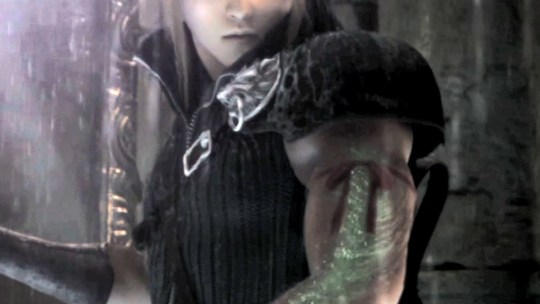
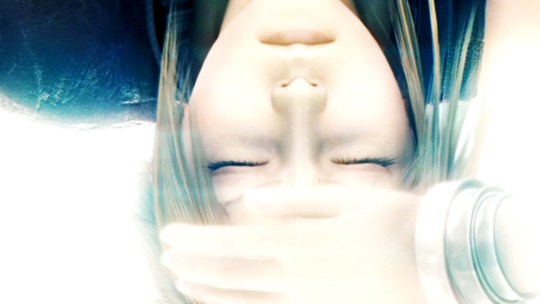

But while this is all fine and dandy, I can understand why people may think of different scenes while hearing these lyrics.
However, their link to Aerith becomes even more blatant as we go. In fact, from here on out, the lyrics basically quote Cloud’s words, feelings & thoughts in the OG as he faces Aerith’s death.
3.

Was it all a dream? Will I ever know?



Foolish and blind to everything Had I realized, had I noticed it sooner, Would you be here in my embrace?
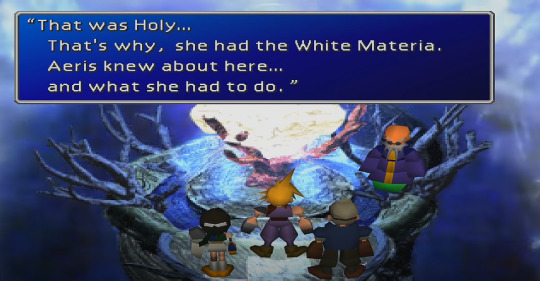
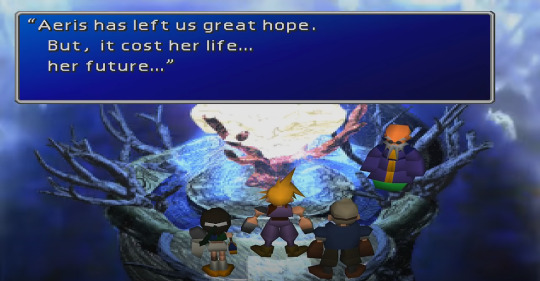

Word. For. Word. These are literally Cloud’s feelings, pain and regrets after losing Aerith.
4.
Then we have the chorus, where the references to Aerith are also clear because she’s always been known for her bright personality, and for keeping a smile on her face even in the hardest of times.


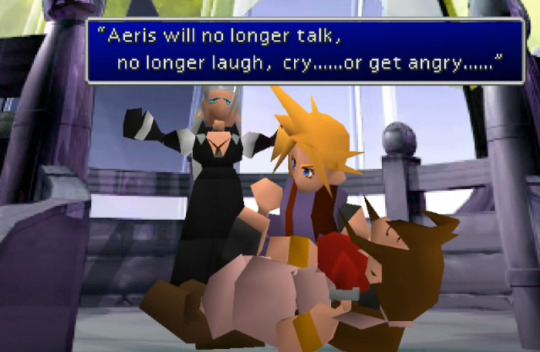
Remember how Kitase said that “If I had know this was coming, I’d have done things differently” was one of the feelings he wanted to inspire with Aerith’s death?
That is exactly what Cloud is singing about in this chorus. But this will become more obvious when we get to the end of the song.
5.

This is honestly unequivocally about Aerith, who hid her pain and the weight of her mission behind smiles and comforting words to not pain Cloud and the others.
Hidden within your smile There were secrets


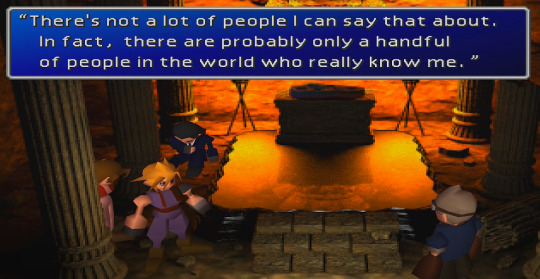
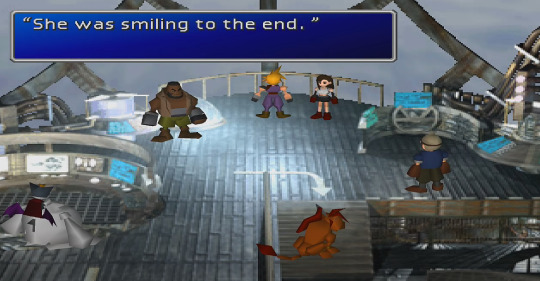
But I was empty I just demanded
This fits perfectly with how blinded Cloud was by his own pain after he lost her, and how this kept him from realizing the truth of her sacrifice.
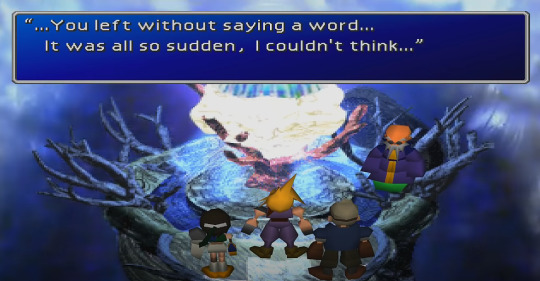

6.
Then there’s the second chorus, where Cloud once again sings about all the things he would do differently if only he were given a second chance.

And what he wants to do most of all, is to be able to notice Aerith’s pain and the truth hidden behind it.

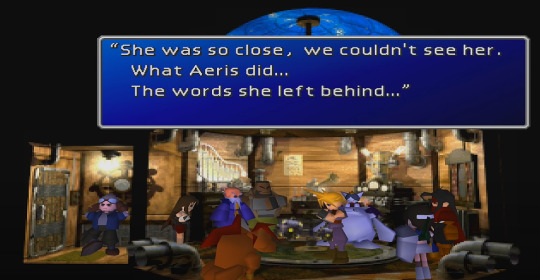
What’s more, while players may have missed it given the graphics of the OG, Remake itself shows that this is indeed how Aerith is. She is always hiding her pain and heavy truths behind a smile. The perfect example comes in Aerith’s Resolution Scene in Chapter 14, where Aerith tries to reassure Cloud that she doesn’t mind staying in the Shinra Tower.
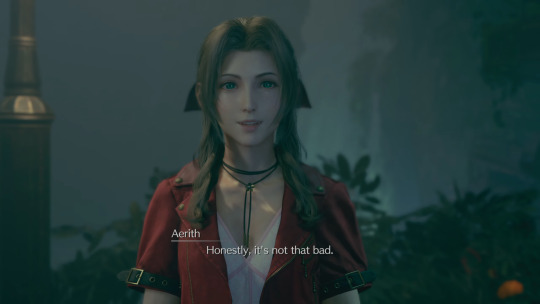
She does her best to keep a bright smile and a happy front. But if you look closely enough, you can see the sadness in her eyes, a clear reflection of her true feelings.

7.
Lastly, we have Cloud facing the truth. That despite all his regrets, despite how hard he may wish to have a second chance, Aerith is gone. And the song takes us full-circle.

You’re no long here, so I’m empty. Again, this fits perfectly with the feeling Kitase wanted to evoke with Aerith’s death.

And Cloud feeling this way is also backed-up not only by his behavior in AC, but also by insight from Tifa, as shared in Dismantled:

Plus, of course: “She was gone in the blink of an eye. But the pain never went away.”
So really, given everything I’ve mentioned above, I just can’t see this song being about anyone but Aerith. Because the lyrics clearly evoke thoughts and emotions Cloud himself said about her in the original game.
And if you keep Aerith in mind, then...
The imagery of the song
In the Behind the Scenes, Uematsu also talks about the imagery that inspired the music. This is what he says about it:
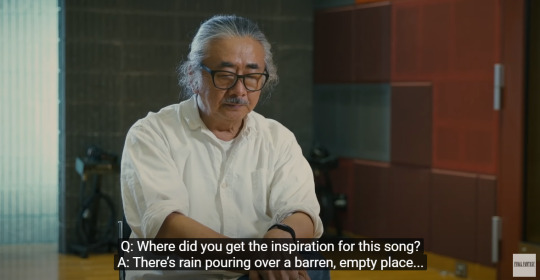
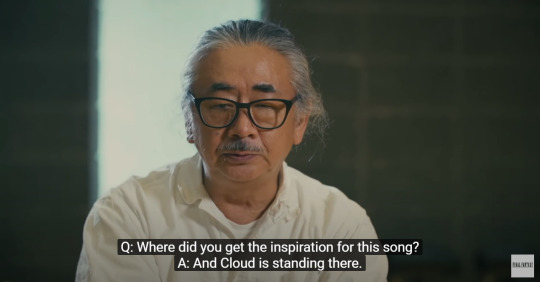
Nojima also confirmed that [Cloud] “standing in the rain” was the second keyword he received to write the lyrics.
The moment I heard this, I thought of one particular scene from Advent Children:

This scene fits the imagery on multiple levels. Cloud is alone, standing on a barren and empty place, as rain pours over him. He lets the rain wash over him, eyes closed.
In this scene, that rain is Aerith’s Great Gospel. It starts falling the moment Kadaj hears Aerith’s voice, heals everyone it touches from Geostigma and Tifa outright speaks to Aerith as she watches a droplet of the rain.
Of course, there’s no way to know exactly what image Uematsu was talking about. But I find this particular scene quite fitting, given all the ties the song has to Aerith.
Not to mention that in the Final Fantasy 30th Exhibition, Aerith says the following about Cloud’s pain after her death: 「もう、泣かないで. 雨になっちゃうよ」 “Don’t cry. You’ll make it rain”. (source)
So, there we have an explicit link between rain — and Cloud’s anguish after he loses Aerith.
To wrap this up, I’ve seen people suggest that the song is about multiple people. I respect that everyone has the right to have a different view-point, but personally, I can’t help but to disagree with this particular one.
Could the song be about multiple people?
There is no evidence of this in the song. At no point does the song switch its focus. At the contrary, the references and themes remain the same all throughout-it — as does its subject.
Your shining smile = Once more, shine brightly = Once more, laugh again = Hidden within your smile, there were secrets = Had I noticed sooner, would you still be in my embrace? = Show me your smile one more, this time = I'll notice the truth hidden inside your tears
The subject and the imagery remain constant, so it’s safe to assume the song is about one person and one person only.
And given all the things mentioned above... I hope you can now see why I can’t think of anyone else but Aerith.
If you made it this far, thanks for reading!
#aerith gainsborough#cloud strife#clerith#fandom: ff7#fandom: remake#spoilers#I love this song to death and I adore all the references it makes to the OG#so I couldn't help myself#that said I'm not going to enter any LTD debates about this so if anyone who reads this disagrees and thinks the song is about someone else#you're more than welcome to write your own analysis about it
314 notes
·
View notes
Link
https://ift.tt/3l39LwX #

Sam Raimi’s Spider-Man trilogy redefined the superhero genre and the summer blockbuster. The three films provided audiences with a sense of escapism unlike anything they had seen before, thanks to its heart-pounding action scenes and collection of beloved characters.
RELATED: Spider-Man Villains Ranked Least-Most Likely To Win The Hunger Games
Peter Parker, his friends, and his foes all got many chances to show off their abilities on the big screen. Indeed, the trilogy’s characters star in some of cinema’s most unforgettable moments. From upside-down kisses in the rain to heartfelt monologues about the responsibilities of a hero, Sam Raimi’s trilogy has plenty of scenes that rank as some of the most memorable in cinematic history.
10 Eddie Becomes Venom

To say that Topher Grace’s depiction of Venom is unpopular would be an understatement. In fact, most fans agree he was one of the things Spider-Man 3 got wrong. That doesn’t mean his character didn’t have some thrilling moments on-screen, though.
Eddie’s most memorable scene in the movie is his transformation into Venom. As Peter gets rid of the symbiote while in a belltower, the alien falls and lands on Eddie, quickly overtaking him. A killer soundtrack and fittingly gloomy atmosphere accompany the transformation. And even if Eddie ended up being an underwhelming villain, his conversion into Venom is definitely memorable.
9 Flint’s Confession
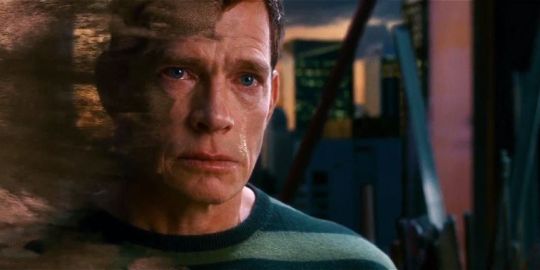
Every fan knows that Spider-Man 3 has way too many villains. None have enough room to shine or prove themselves as worthy heirs to Goblin and Ock’s legacies, but they still get some redeeming moments. In Sandman’s case, it’s his final monologue to Peter, where he confesses his guilt about the part he played in Uncle Ben’s death.
Enhanced by Thomas Haden Church’s performance, the scene succeeds in providing some much-needed closure for Peter. Sandman is less a villain and more a tragic figure of circumstance, and his confession to Peter confirms it.
8 Goblin’s First Flight
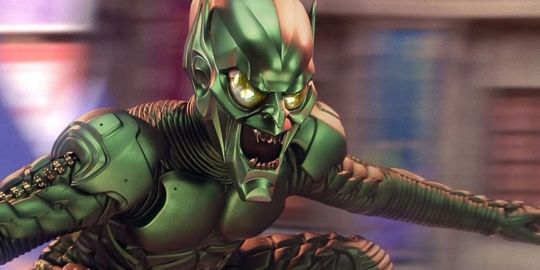
Willem Dafoe redefined what it means to be a comic book villain. His take on the Green Goblin is the perfect mix of over-the-top and seriousness, adding a sense of gravitas that overcomes the more cartoonish aspects of the role.
The character has plenty of memorable moments in the first Spider-Man movie. However, his initial confrontation against Spider-Man during the World Unity Fair will go down in cinematic history as one of the best action scenes of all time. It is fast-paced and thrilling, wasting not a single moment of its four-minute length. The Goblin gives an impressive display of his powers, proving that he will always be Spider-Man’s best villain.
7 Otto Octavius’s Sacrifice

Sam Raimi’s first two Spider-Man films succeeded because of how much they fleshed out the villains. They weren’t just CGI creations trying to take over the world, but three-dimensional characters with ambitions and limitations of their own. Spider-Man 2‘s Otto Octavius is one of the genre’s most compelling villains, one who succeeds in winning the audience’s sympathy while remaining a fearsome threat.
RELATED: 10 Things Only Comic Book Fans Know About Doctor Octopus
During Ock’s final moments, he sees the error of his ways and decides to go down with his creation. Proclaiming he will “not die a monster,” Octavius sacrifices for the greater good. Thanks to Alfred Molina’s committed performance, the moment is one of the trilogy’s most memorable, cementing Octavius as one of the genre’s most complex characters.
6 J. Jonah Jameson Saves Peter Parker
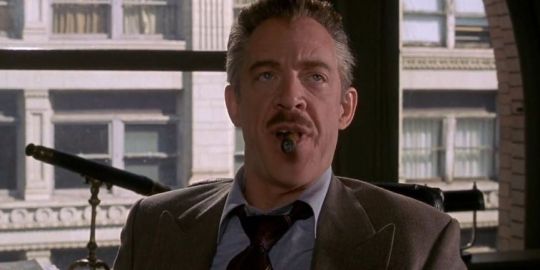
J.K. Simmons as J. Jonah Jameson is the very definition of spot-on casting. The actor took an already well-known character and translated him into the screen seamlessly and faithfully. Throughout his tenure in the trilogy, he gets plenty of comical moments, but his most memorable is his protection of Peter Parker.
When the Green Goblin blasts into the Bugle’s offices, he threatens Jameson and asks for the name of the photographer who takes Spider-Man’s pictures. Jameson refuses to tell on Peter, telling the Goblin the reporter sends his stuff through the mail. The scene shows a new and unexpected side to JJ, a glance at the empathy he works so hard to hide.
5 Uncle Ben’s Lesson
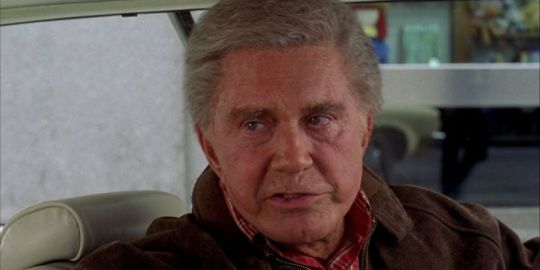
Uncle Ben’s death is one of the defining moments in Peter Parker’s storyline. It’s the first of many (many) tragedies to happen to the character, inspiring him to become a hero in the first place. Sam Raimi provides enough room for Uncle Ben’s character to develop before arriving at the inevitable conclusion.
Cliff Robertson’s heartfelt monologue summarises the essence of Spider-Man. “With great power comes great responsibility” has become one of the most enduring phrases in pop culture, adding a more profound layer to Raimi’s trilogy. And while Uncle Ben has little screentime, his presence remains throughout the entire trilogy, thanks in large part to his now-immortal words.
4 Aunt May’s Advice
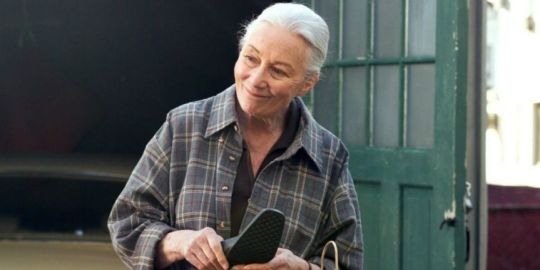
Rosemary Harris remains the most compelling and memorable cinematic Aunt May. She imbued the role with plenty of warmth and empathy, avoiding the one-dimensional approach of subsequent movies. Harris’ Aunt May wasn’t just another peripheral character; on the contrary, she was Peter’s anchor, a constant source of inspiration for both the boy and the hero.
Her role as Peter’s guide is blatantly clear during her monologue in Spider-Man 2. While she packs her things to move out from her house, she talks to Peter about the nature and importance of heroism. Her speech is the gentle push Peter needed to understand the true role of his superhero counterpart. It’s a sweet but unforgettable moment that confirms Aunt May’s importance in the friendly neighborhood Spidey’s life.
3 Goblin’s Last Flight
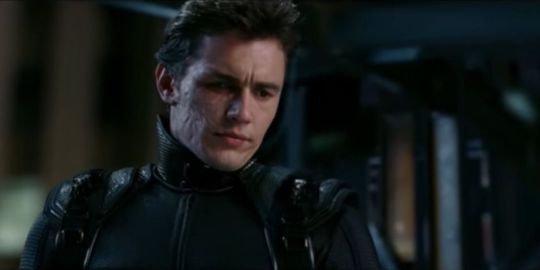
Throughout the Raimi trilogy, Harry Osborn suffers almost as many ups and downs as Peter himself. The loss of his father leaves him devastated and desperate to find someone to blame, leading to his descent into the Green Goblin persona. Alas, Harry was never his father, and he proves it at the last moment.
RELATED: 10 Most Powerful Variants Of Green Goblin In Marvel Comics
Sporting the Goblin costume, Harry goes to help Peter fight Venom and the Sandman. The two confirm their friendship, and Harry bravely dies fighting the enemies. Harry’s sacrifice continues the recurring theme in the trilogy that every victory comes with a steep price. It’s also a perfect send-off for the character and a way to restore the Osborn legacy.
2 Mary Jane’s Upside-Down Kiss
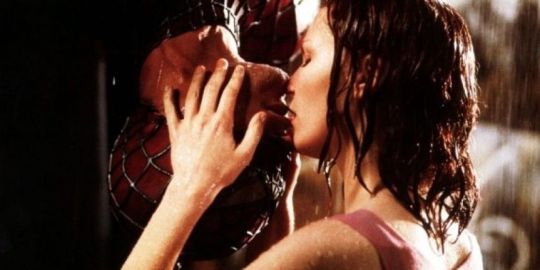
For all its strengths, the Raimi trilogy has one undeniable flaw, and that’s its treatment of Mary Jane Watson, Peter Parker’s main love interest in the comics and most movies. The character barely received any development beyond her damsel in distress role. Still, Mary Jane is a crucial figure in superhero movies; she defined the “superhero girlfriend” role for better and worse.
Out of all her moments in the trilogy, Mary Jane’s most memorable is her upside-down kiss in the rain with Spider-Man. It’s not only one of the most iconic scenes in modern cinema, but a perfect summary of MJ and Peter’s relationship. The setup may seem a tad outdated under a 2021 eye, but Kirsten Dunst and Tobey Maguire’s chemistry is so electric that fans can let go of the more dubious elements of the scene and enjoy the romantic aspect.
1 Spider-Man Stops A Train
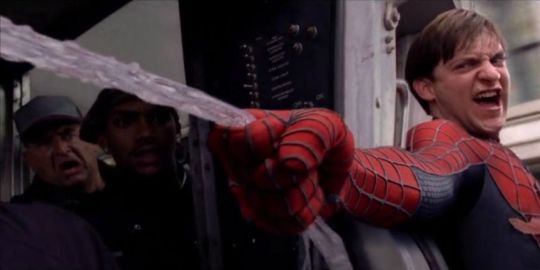
Tobey Maguire’s Spider-Man remains as beloved now as he was back then. His take on Peter Parker gained new life thanks to the internet; indeed, Maguire’s Spidey is the king of memes, from Bully Maguire to the now-iconic “I missed the part where that’s my problem.”
However, this Spider-Man remains a blueprint for cinematic superheroes, thanks to his many heroic moments on screen. None is more memorable or inspiring than his efforts to stop a speeding train in Spider-Man 2. The scene works not only as an action setpiece but as a demonstration of Peter’s strongest power: his perseverance. Peter will never stop trying, even if all the odds are against him. Spider-Man is so relatable because he makes multiple mistakes and spends his time trying to fix them. But the point is, he will always try, and the train scene is the perfect representation of Spider-Man’s essence.
NEXT: 10 Unpopular Opinions About The Sam Raimi Spider-Man Movies (According To Reddit)
#marvel #avengers #marvelcomics #spiderman #mcu #ironman #comics #captainamerica #thor #avengersendgame #marvelstudios #xmen #dc #marveluniverse #art #cosplay #tomholland #hulk #disney #comicbooks #dccomics #peterparker #tonystark #blackwidow #marvellegends #endgame #deadpool #marvelcinematicuniverse #loki #bhfyp
The post Sam Raimi’s Spider-Man Trilogy: Each Main Character’s Most Iconic Scene appeared first on undertheinfluencerd.net.
#entertainment, screenrant #tumblr #aesthetic #like #love #tumblrgirl #follow #instagram #photography #instagood #likeforlikes #s #likes #art #cute #o #girl #followforfollowback #a #tumblrboy #grunge #fashion #photooftheday #tiktok #l #photo #sad #k #frases #f #bhfyp
2 notes
·
View notes
Text
Episode Review - 2100 Degrees
by @lonestarbabe
9-1-1 Lone Star’s second episode of its second season, 2100°, presents viewers an unfathomable disaster. A highly-promoed volcanic incident gives the original 9-1-1 a serious competitor in its bid for the most outlandish emergency scenario to ever be imagined. Funnily enough, the outrageousness allows the show to combine offbeat humor and character development that culminate in utter heartbreak. While the insane 9-1-1 calls may be the flashy attention-grabbers of the show, it is the character dynamics that make the show most compelling and allow the audience to suspend their disbelief and become invested in the lives of the characters. Thus, the episodes that align their attention around the characters’ lives rather than the emergencies are the most endearing. 2100° puts the characters front and center and allows the emergencies to reflect the concerns and insecurities of the characters, and it wonderfully shows the forged togetherness of the 126 and everyone in their periphery.
The episode begins with a pool party that inherently feels more dangerous in a COVID-19 world, even before the party turns into a flesh-melting horror show commences. The pool becomes the first volcanic hot spot viewers see, and the irresponsible partygoers start to live out their worst volcanic nightmares. The next scene cuts to eight hours before the party. The 126 is having a party of their own to celebrate Owen being in remission from his cancer. The event is made comical with a tumor cake that T.K. had gotten made to look like scans of Owen’s tumor. It’s no doubt an ugly cake, inscribed with the words ���Tumor Slayer,” but the gesture shows how the 126 has built a family and how they have become even closer since we saw them meet way back in season 1. Cheesy tumor jokes are shared in jubilance, but there’s undeniable darkness that still looms. Owen sets the tone of the episode when he says, “I am both repulsed and moved.”
Hints of what is to come in future episodes are shown through casual moments. Carlos not-so-artfully dodges T.K.’s inquiry about meeting Carlos’ parents, Tommy sits alone and shows the insecurities she has about coming back to the job, and Owen broods rather than enjoying the party. Gwyneth tries to get Owen to not bottle things up (referring likely to their past relationship issues). Things are looking up, but there’s still a sense of unease that follows viewers into the next scene, which features a young family. They’re having a fun day at Paradise Family Fun Center. The dad seems to be in good spirits as he plays mini-golf, but his wife mentions that he is tense. Just like Owen, he is bottling his feelings up. He’s set over the edge when he misses the shot for mini golf, and it’s revealed that the family is “officially broke.” As the husband boils over, his wife is understanding. You can see the tension drop from the husband’s shoulder, but before the moment can get too comfortable, in true Lone Star fashion, the man falls into a steamy pit. This scene furthers the sense of urgency that suggests the 126 shouldn’t get too comfortable— the world is too unpredictable for comfort.
The 126 rescues the man with Marjan diving into action without waiting a beat, and while tending to the family, Tim makes a dangerous promise to a child that “Nobody is going to die today.” The minute the words are out of his mouth, it’s clear he’s said the wrong thing. Tommy scolds him about it, telling him that he wanted to make himself feel better by reassuring the child, but just scenes later, she makes similar promises to her eight-year-old twins. She feels guilty, knowing it’s never good to make promises that she can’t guarantee. She’s self-aware of her actions, and the guilt begins to spike. She is doubting her role as a leader, and she wonders if she can balance her work and family life, which is a reoccurring theme for the new character. Gina Torres excellently shows the conflict the character faces in a way that feels subtle but poignant.
Grace gets one of her few moments in the episode when a young woman named Lily is stuck in a comedically named food truck called Guac and Roll that sells vegan Tex-Mex. She is surrounded by both scorpions and lava. Yikes! Grace thinks quickly, and she’s an expert at keeping a reassuring voice as she goes through options until she finds one that works. Grace sounds so in control that it would be easy to lose track of how smartly she manages emergencies. Grace helps Lily create a dressing concoction to get the scorpions to scramble until Carlos comes and escorts Lily out. Seeing Carlos, however briefly, always makes a scene better, and he and Grace make a pretty great team.
Back at the pool, nice girl, Elise, has badly burned herself by trying to save a jerk, who had mocked Elise for her looks, saying that she is a “Waco four.” A nicer young man, who pines for Elise, is hit by volcanic debris, which draws the attention of Tommy and Nancy. Elise and the young man are taken to safety, but the chaos only increases for the 126. Tim tends to a young man, Spence, and despite Spence’s pleading for reassurance, Tim refuses to promise that Spence will be okay, learning from his past mistakes. Unfortunately, it is at this time his words come back to haunt him. The words “Nobody’s dying today,” feel especially ominous as the volcanic debris strikes Tim and kills him right there and then. The show doesn’t take the time to even try to save him, which makes his death blink and you miss it. The speed of the tragedy shows how quickly life can take a turn for the worse, and it adds to the helpless feelings the 126 collectively has in the following scenes because they were powerless to save Tim, but they still regret that they hadn’t found a way to save him.
The final quarter of the show is fittingly dedicated to the initial grief that the team is feeling. They are despondent, and Nancy especially expresses guilt over leaving Tim. They had no choice but to leave him, and Judd’s words, “There was nothing left to work on, Nancy,” feel like a big, volcanic boulder through the viewers’ hearts. The small gestures between the 126 show the skill of the actors and the closeness of the team. Marjan grounds T.K. with a hand on his shoulder. Judd passes Marjan a pillow after clutching it himself (just as he did when he clutched the pillow in therapy back in episode 2). Judd, incredibly familiar with the pain of losing members of his team, is a voice of reassurance and strength in the ending scenes, and this shows how much he has grown. He tells Tommy that she has added to her family, which reiterates the idea that while they have all lost so much, the 126 is still family. Prompted by Judd’s words, Tommy apologizes to Nancy for her loss, and then changes her words to say, “our loss.” You can feel in this moment, as she comforts Nancy, that Tommy is becoming more integrated into the group whereas before these episodes she only really knew Judd and Grace.
The final moments show how each of the 126 and their family members are coping with the loss. The song Hallelujah makes the scene even more heartbreaking and the startling beauty and horror of the falling ashes sets the tone of the montage. You can feel the grief of each of the characters, but there are moments of intimacy and love between the intense sorrow (and these connections make these final moments all the more painful for the viewers). These moments are some of the best images in the entire show, and they evoke so many feelings without having to overact the grief that the characters are feeling. These moments feel resigned, and the helplessness they all face is tangible. All they can do is search for the parts of their life that give them meaning and reprieve from their feelings of loss.
In these moments, Owen pets Buttercup and talks to Gwyneth about what has happened. He sits outside, after just recovering from lung cancer, and breathes in volcanic ash as he drinks tequila in a way that feels unhealthy. His survivor’s guilt from 9/11 is still strong, showing that loss doesn’t just go away over time. Marjan and Paul are together, and Marjan tearfully boxes with Paul. Mateo goes on a lone run, and you can imagine the dialogue that’s going on in his head— the pained thought that he is always in trouble. The guilt that naturally comes with such thoughts is probably intense. He runs to a church, halting in front of it as the song starts to reach its crescendo. He’s looking for meaning, and it is no coincidence that he is the one character who has no companionship in those moments. Tommy, meanwhile, tends to Buster, Tim’s kitty, who she has brought into her own family. The moment shows immense progress for Tommy, and it only took her one episode to make such large strides.
In one of the most powerful moments of the episode, we see T.K. entering Carlos’ apartment. He climbs up the stairs before falling into Carlos’ waiting arms; this instant is a glimpse of the intimacy that viewers have been wanting to see between the characters. It is a brief but painful moment. Echoing the scene between Carlos and T.K., Judd goes home to Grace, who is waiting in bed; she is still awake and pulls Judd closer. They have each other, and that is a small comfort. Judd’s face is filled with all the memories and sorrow that he has gone through in such a short time. He doesn’t close his eyes. It will be a sleepless night for everyone.
The episode was beautifully paced, and it showed the bond between the team. It emphasized relationships between characters over plots, and the balance between the characters felt more balanced. 9-1-1 Lone Star is making good progress with its characters and learning how to balance the large cast of characters. Nevertheless, the show still has work to do to make sure that the diverse characters are not objectified or ignored. Too often, characters like Grace and Carlos are used merely as puppets in other characters’ stories. For example, while Carlos was expertly played by Rafael Silva in this episode, his appearances were brief, and when he did appear, he furthered other people’s storylines, particularly T.K’s. The future for these often neglected characters looks promising, however, and the show will make great improvements if they learn to incorporate all the core characters better. 2100° shows both the progress that 9-1-1 Lone Star needs to make, but it also
5 notes
·
View notes
Text
Marvel’s Loki Episode 5 Ending Explained: Who is the Real Villain of the MCU Series?
https://ift.tt/36oBhxO
This article contains spoilers for Loki episode 5.
Agent Mobius did say that time ran differently in the TVA but who could have imagined that the penultimate episode of Loki would arrive so quickly? Marvel’s Loki episode 5 “Journey Into Mystery” keeps up a streak of superb installments for this increasingly superb show.
In this hour, Mobius joins the side of the heroes, Judge Renslayer has some questions, and Loki and Sylvie’s relationship continues to blossom thanks to the conjuring of an uncomfortable green blanket. Equally as important, however, is that “Journey Into Mystery” raises some big questions about the ending of this show and the future of the MCU. Questions like…
What is The Void?
This episode does a pretty good job of succinctly describing what the Void is. The Void is the end of time, itself. Since the Time-Keepers are unable to completely destroy matter (Theory of Conservation of Mass and all that), they send unwanted Variants to the end of the timeline to languish or be swallowed by a hungry monster (more on him in a bit).
In Marvel Comics, The Void is something of an actual character. It is a destructive amorphous entity capable of both adopting a corporeal form and destroying the universe as we know it. During the Siege storyline, the Void even killed Loki, which then facilitated his “rebirth” as Kid Loki. See how this all starts to fit together?
What is Alioth?
In the world of Loki, Alioth is a big, hungry cloud monster that prowls the Void looking to consume yummy matter. It’s the TVA’s unwitting cleaning service, wiping out all the Variants that the TVA can’t eliminate. Classic Loki helpfully offers up the analogy that the Void is a shark tank, and Alioth is the shark.
Alioth of the comics was first introduced in 1993’s Avengers: The Terminatrix Objective #1. That same comic also introduced Ravonna Renslayer and features Kang the Conqueror as its central villain. Oh yeah, it’s all coming together.
Alioth is considered to be the first being that broke free from the constraints of time. It’s no wonder then that it would make an appearance in Loki.
What’s Up With That Castle?
It’s about time a Marvel villain lives in an honest-to-goodness castle! While it’s still possible that this is a misdirect and this environment is not what it seems, for now it looks like episode 6 will be headed off to a spooky castle.
Interestingly, there are no shortages of spooky castles in Marvel comics lore. Perhaps the most famous one is Castle Doom within Doomstadt. Bet you’ll never guess who lives there! Yes, it’s ol’ Victor von Doom himself, Doctor Doom to his friends…of which he has very few.
Another notable abode is Castle Limbo, which serves as the home of Immortus, who was once Nathaniel Richards a.k.a. Kang the Conqueror. Look, Kang is a confusing character, so you’ll just have to trust us on this one.
What is Mobius’s Plan?
Thank the gods that Loki and Mobius finally embraced their destiny as best bros. Mobius leaves all the Lokis behind in The Void to return to the TVA. What does he plan to do once he gets there? Why, burn the whole thing down, of course!
It’s unclear how Mobius believes he’s able to pull off such a grand task. The TVA is an enormous bureaucracy with seemingly infinite moving parts. The only real weapon that Mobius has at his disposal is the truth. The truth changed his and Hunter B-15’s perspectives but can it do the same for everyone else? The only other named TVA employee that we’re aware of is Casey (Eugene Cordero). He seems like a sweet, non-confrontational lad. But perhaps that will all change once he realizes he’s been robbed of fish dinners his whole life.
cnx.cmd.push(function() { cnx({ playerId: "106e33c0-3911-473c-b599-b1426db57530", }).render("0270c398a82f44f49c23c16122516796"); });
What Becomes of the Other Lokis?
The most pleasantly strange aspect of “Journey Into Mystery” is how many new Lokis it introduces. This hour features: Classic Loki (Richard E. Grant), Boastful Loki (DeObia Oparei), Kid Loki (Jack Veal), President Loki (Hiddleston), and Alligator Loki (uh… a CGI alligator). Naturally, each of those Lokis has their own official hashtag sprite on Twitter.
Fittingly for their chaotic energy, each of the Lokis introduced in this episode have quite different ultimate fates. Boastful Loki betrays his Loki comrades, because that’s just what Lokis do. The subsequent scene of President Loki and his Void army battling the other Lokis is one of the best moments of this show yet. That causes our Loki to take off with Classic, Kid, and Alligator. When Mobius invites that trio to come back to the TVA with him, they decline because the Void is their home now.
Read more
TV
Sylvie is the Secret Heart of Marvel’s Loki
By Lacy Baugher
Games
How Loki and Fallout Use Retrofuturism to Unnerve Us
By Matthew Byrd
That is the last we’ve seen of Kid Loki and Alligator Loki thus far but not the last of Classic Loki. The comic-accurate trickster returns to help Loki and Sylvie when they need it the most. He uses stunningly powerful magic to create an approximation of Asgard all around him, distracting the ravenous Alioth. Even Sylvie with her enchantress power is stunned by Classic Loki’s abilities.
Is Richard E. Grant’s Classic Loki Really Dead?
Ultimately Classic Loki is swallowed up by the Alioth and therefore finally blinked out of existence. Or is he? It seems like he could have been utilizing the very same technique here he claims to have used to escape his death at the hands of Thanos in Avengers: Infinity War. “I think we’re stronger than we realize,” Loki tells Sylvie, so this would certainly be a case of that if it came down to it.
Plus, that leads us to the final and most important question that this episode raises.
Who is the Villain?
Who indeed? There has been one name bandied about as the most likely Loki Big Bad. Before we get to him (and it’s absolutely who you think), indulge us in another theory. What if the villain of Loki is…
Classic Loki or Another Loki Variant
Richard E. Grant is kind of a big deal as an actor. It’s not every day you can find a seasoned performer who can portray a kindly exterior with some menace underneath. With that in mind, it’s possible that Classic Loki is a bigger character than he appears at first glance. This episode goes out of its way to communicate just how powerful Lokis can be. And when you combine that kind of god-like power with a trickster’s sensibility, it’s not hard to imagine that Classic Loki, or another Loki entirely, could be pulling all the strings.
Kang the Conqueror
While Loki confronting himself in the end would make for a dramatically interesting enterprise, the hard evidence at hand still seems to indicate that Kang the Conqueror is our real villain. The internet at large has been banging the drum for Kang the Conqueror as the ultimate Loki villain for weeks now and it’s not hard to see why.
This isn’t a case of collective delusion like with all of the Nightmare/Mephisto WandaVision theorizing, Kang really does seem to be a legitimate possibility. For starters, we know we already have an MCU actor for Kang in the fold already in the form of Jonathan Majors (Lovecraft Country). Kang was announced for Ant-Man and the Wasp: Quantumania but doesn’t it sound very Marvel for the character to make his unexpected debut here?
In the comics, Kang the Conqueror is wrapped up in multiverses, timelines, and all manner of heady sci-fi nonsense that Loki is already invested in. In fact, as Reddit user u/Hpotter821 points out, one iteration of Kang in Marvel comics sought to become Immortus by eliminating all of his other Variants. It would seem that creating the TVA to police other timelines would be quite useful in that mission.
Then there’s the fact that Kang has at least some level of crossover with just about every major character and element of Loki. Kang has a relationship with Ravonna Renslayer in the comics and is also an occasional rival of Alioth. The show is not shy about injecting Kang’s aesthetic into the proceedings. While ostensibly space lizards as Loki described them, the Time-Keepers do appear to resemble the classic Kang the Conqueror look a bit. And the TVA logo?
Oh. Hey. I just noticed that the centerpiece of the Time Variance Authority’s seal totally looks like Kang’s head. 🤷♂️ #Loki pic.twitter.com/93QzNDVSbi
— Ken Plume (@KenPlume) July 2, 2021
Oh yeah, that’s Kang, baby.
Perhaps by this time next week, all of this Kang conjecture will look as silly as WandaVision’s Mephisto fever dream. It’s undeniable, however, that Loki has provided us with plenty of breadcrumbs. If it’s all a Kang-sized red herring, then so be it.
Doctor Doom
This is a considerable longshot, despite the fact that we’ve wanted it to happen for a long time. Doom was at the center of Marvel Comics’ multiverse-shattering Secret Wars event by Jonathan Hickman and Esad Ribic, and the castle we see in this episode’s conclusion sure does look an awful lot like his humble Doomstadt home.
Every time we get excited about Doctor Doom or the potential Secret Wars threads embedded in this show, we’re brought back to reality by the fact that there’s virtually no way that Marvel would introduce arguably their greatest villain in a teasing series finale episode, especially not when they’ve got the Kang-centric Ant-Man and the Wasp: Quantumania to tee up with Kang. Yes, we’re hedging our best by including him, but can you blame us?
Anyway, patience, Doom fans. The Fantastic Four movie is finally a priority for the MCU, and we should see that by 2023.
Kevin Feige
This obviously won’t happen but in the spirit of Marvel’s next Disney+ series What If…?, what if Loki and Sylvie arrive to the throne room in the castle and Marvel Studios head Kevin Heige is hanging out there wearing one of his trademark baseball caps? As witnessed in WandaVision and now Loki, this phase of Marvel cinematic storytelling is clearly about setting up a new multiverse of possibilities. What better way to introduce that multiverse than by completely breaking the fourth wall?
OK, so there are probably a ton of better ways but Feige would at least be fun and truly unexpected.
The post Marvel’s Loki Episode 5 Ending Explained: Who is the Real Villain of the MCU Series? appeared first on Den of Geek.
from Den of Geek https://ift.tt/2Uv1SXs
1 note
·
View note
Text
What’s Missing in The Rise of Skywalker or What I Think Star Wars Needs in Order to Work…
This may be pure conjecture on my side… But there’s one thought that’s not letting me go these days.
We have shredded Episode IX to pieces by now and we all know its plot holes and massive problems with character development, coherence, morality etc.
But I’m realizing that there is something that Star Wars has always had at its center… and I believe that without it, it simply cannot work.
The Father Figure.
Remember, the central sentence (and one of the most iconic film scenes ever) is the infamous “No - I am your father.”
So let’s face the saga from this point of view.
The Phantom Menace is not a masterpiece of filmmaking, but a decent film, with an interesting story and a lot of intriguing characters. It works well as a solid introduction to the prequel trilogy.
At its heart we find Qui-Gon Jinn. Gentle, cunning, compassionate and rebellious, Qui-Gon is the ideal Jedi if there ever was one. To Anakin, the fatherless child, he is the first father figure he knows, the first person who is an advocate for him and pleads his cause; not that his mother wouldn’t, but she was powerless to do so. Qui-Gon also has the broad-shouldered, tall frame that will later become one of Darth Vader’s trademarks.
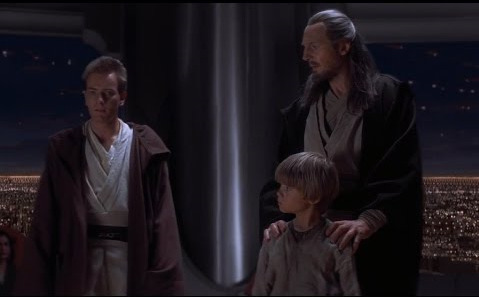
Attack of the Clones is one of the weakest, if not the weakest Star Wars film of all. And I can’t overlook the fact that there is no father figure at its center.
We get to know Jango Fett, Boba’s father, who is however not a main character: his presence is important for the course of the plot, but not the impact of his personality itself.

We also have an interesting insight in Anakin’s relationship with Obi-Wan. It takes only a few minutes for us to realize that these two are not on the best of terms: Obi-Wan is too immature and inexperienced for the task he has to shoulder, too strict in his adherence to the Jedi Code (possibly due to the other Jedi’s critical eye on them), and Anakin is more powerful than he is despite his youth. As a result, young Obi-Wan does not have much, if any, influence on the events of the story. He may be a good Jedi but as a father figure for young Anakin he is not suited at all.

Revenge of the Sith sees Palpatine taking over the rule as Anakin’s master: it is interesting that before this moment, he used to refer to the Anakin as “Son”, another way of subtly manipulating the young man who was in need of a father figure to look up to.
The film is excellently made and, very fittingly, the unraveling of a human tragedy. Palpatine is the most powerful and also most horrifying father figure imaginable, who offers Anakin enormous power to a terrible price: the loss of everything he ever was.
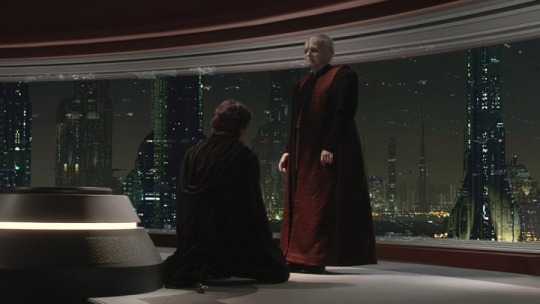
A New Hope is a very good film in many ways and for a lot of good reasons, not least due to the elderly Obi-Wan (Ben) Kenobi. He is the one who introduces Luke to his powers and explains him - and also us, the audience - the nature of the Force. Without him, we would be dealing with a good but not remarkable science fiction story. The element of magic is introduced by the Jedi who is a mentor to Luke, another young man who longs for a father figure in his life.
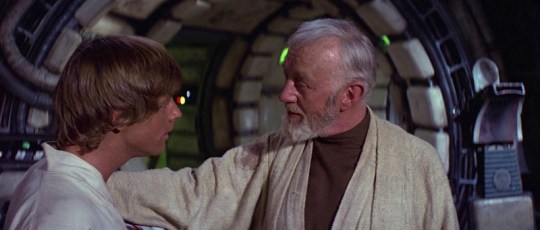
To put it mildly, The Empire Strikes Back rocks! I still think of it as the best Star Wars film ever made. It contains everything a film needs to be compelling even on seeing it again and again.
And who is at the core of it all? Darth Vader, the Dark Father, the Evil, Unknown, Malignant Father. Vader is at the height of his power in the film which from his point of view is the hunt for the son he thought dead and now wants to bring at his side at all costs. Vader is terrifyingly powerful throughout the film, he dominates every scene.
Not coincidentally, we see him in his meditation chamber once where he reminds of a king sitting on his throne.

Return of the Jedi is not bad per se but it is commonly (and in my opinion rightly) seen as the weakest of the original trilogy. Yes, I know, the Ewoks are annoying and in Jabba’s palace we already have too many Muppets - it doesn’t work when you want to make your film more child-friendly and at the same time to tell the culmination of a family drama.
But again, what I miss here is a central figure. We see Palpatine holding Vader’s leash, until he is at the last moment defeated by the father desperate to save his son. It is an act that costs him his life and makes Vader and his redemption heart and soul of the story.
But until that moment, we have Palpatine at the center of the plot. Thus, there are two father figures. And I can’t help but noticing that the fact is a little irritating in itself. Similarly to Attack of the Clones, Return of the Jedi seems to waver when it comes to deciding what it is about, what the actual, all-encompassing arc is.
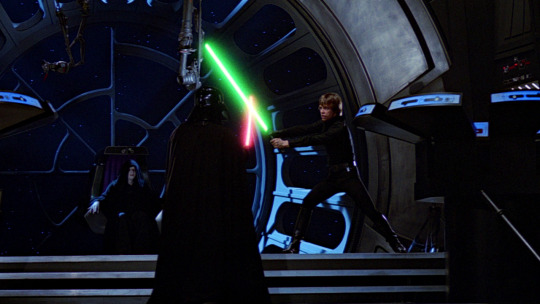
The Force Awakens: Han is thirty years older now and a father figure himself - to a son who felt abandoned by him. Han dominates the key scene: his son is unhinged and conflicted and despite his power, he doesn’t have the events under control.
Han’s decision to give up his life to save his son’s soul is a last, desperate act born from love which parallels Vader’s. Even if at this moment we do not yet realize that he will succeed in the end, we are aware that something momentous has happened on the fatal bridge: an event that was built up for many years and will have enormous repercussions on everyone involved.
Not surprisingly, Han also felt like a father figure for Rey, the other protagonist of the sequels.

The Last Jedi sees an aged Luke Skywalker in the role of the wise old mentor which once was Obi-Wan’s. Though his attitude is not exactly fatherly, Luke is heart and soul of the story. His wisdom, his courage and also the admittance of his failure push the story onto its tragic but heroic ending.

The Rise of Skywalker is disappointing on many levels, but thinking about it again, there is again that certain something that I miss most.
Yes, the Father Figure.
Palpatine is but a creepy old shadow and is not even acknowledged as kin by Rey.
The central and most moving scene is, again, a meeting between Han and his son, finally reconciling.

For good measure
Rogue One is the story of Jyn’s father Galen, his plans for the Rebellion and her daughter living only to fulfill them. Though sad, it is a good and convincing story.

Solo is nice to watch but it does not work as well as Rogue One. My guess is that focuses too much on action and not enough on character development: the film does not make clear enough that Beckett is a father figure for Han, and that it is significant for his personal development to leave him and his mindset behind.

The Clone Wars has Anakin’s relationship with his padawan Ahsoka at the heart. Though from their age difference he is more like a big brother for her, differently to the other Jedi he is protective, respectful and listening with her. Anakin’s attitude proves over and over what a good father he would have been had he had the chance.
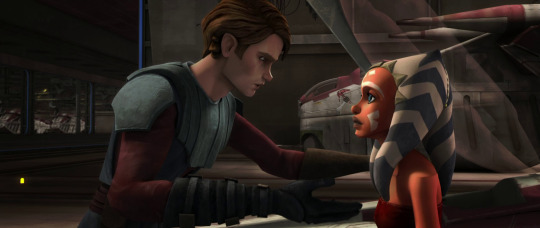
The Mandalorian works excellently and it has, again - need I say it? - a father-son relationship at its core. Despite his previous cut-throat demeanor, Dindjarin always makes his little protegee feel safe and lets him develop his powers in his own way and time. In return, the child is his way back to humanness.
This is the most heart-warming and perhaps until now most convincing father-child-relationship we have ever had in the entire Star Wars universe. Is the series so good for its action scenes? I’m not denying that. But that’s not what the story is about: it’s about what makes a good father, even if you are everything but a saint.
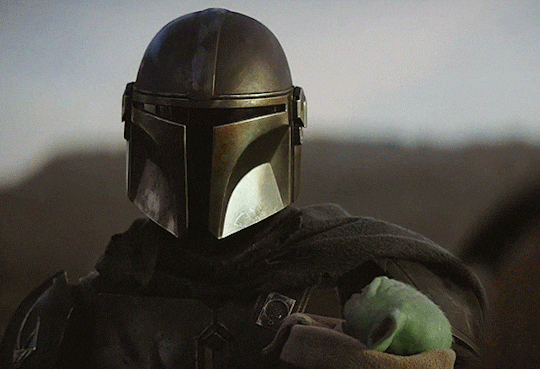
And that what is most bitter for me about The Rise of Skywalker.
Ben Solo did not get to be the father figure I was certain was his ultimate fate to be: he was Vader’s opposite in so many details, down to his facial figures. Darth Vader was a most impressive villain but a nightmarish father. Kylo Ren never was half as convincing as a villain, which to me made it logical to assume (also since we get to know Ben Solo as an emphatic, caring person) that he was meant to be a good father and his failure came from trying to be something he wasn’t meant to be in the first place.
Anakin had damned himself with the carnage of the Jedi padawans; and in The Last Jedi the Canto Bight children, one of which is Force-sensitive, had been introduced. By becoming the Good Father his grandfather never had the chance to be Ben would have found redemption and purpose. And Rey, having been abandoned herself, would have been an excellent mother figure. (Apart from that, I don’t doubt that Adam Driver could play the role of the affectionate, protective father hands-down.)
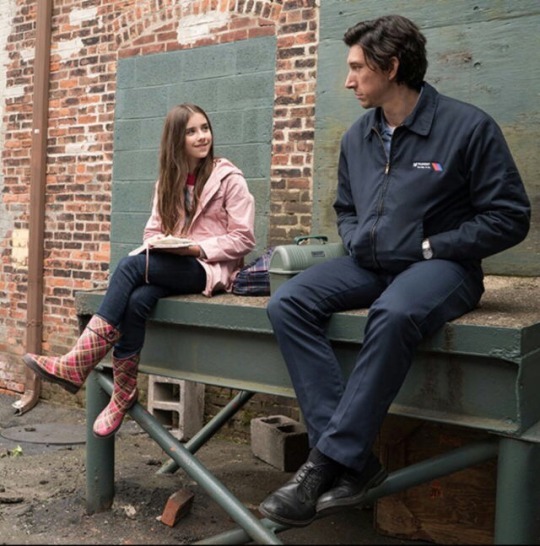
It is still a mystery to me why this obvious route was not taken by the filmmakers. Letting the last of the Skywalker blood die without having him fulfill his destiny was the bleakest route the story could take.
I don’t know what’s in the cards with Rian Johnson’s trilogy. But I haven’t given up hope for the saga to finally give us the happy, united family that I am positive always was meant to be at its core.
Tragedies and cautionary tales are well enough. But I believe that after all of the drama, we ought to be in for some joy and fun at last. 😊
#star wars#ben solo#darth vader#the mandalorian#episode IX#the rise of skywalker#adam driver#skywalker family#rian johnson#anakin skywalker#obi-wan kenobi#palpatine#luke skywalker#han solo#qui-gon jinn#boba fett#jango fett#the last jedi#read more#sw
128 notes
·
View notes
Text
Top 15 Villains from "Batman: The Animated Series"
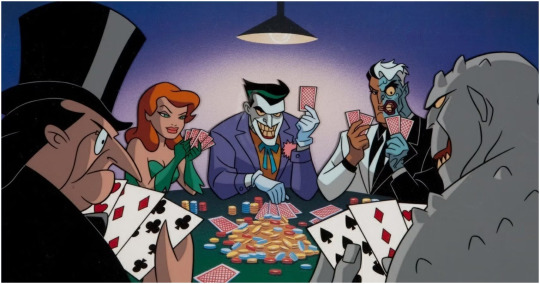
Today marks the birthday of the late Kevin Conroy; a fine actor who did many things…but who most people recognize nowadays as the single greatest Batman voice there ever was. Conroy, of course, got his start in the part with the seminal “Batman: The Animated Series.” This television adaptation of the Batman mythos was and still is widely considered to be the definitive interpretation, and was the start of the much-renowned DCAU, which would go on to feature such shows as “Justice League” and “Static Shock.” For many, however, B:TAS was not only the first but the finest, and remains highly lauded to this day. Part of what made this show great, of course, was what makes virtually any take on Batman great: the Dark Knight’s colorful cavalcade of creepy and crooked antagonists. Batman’s Rogues Gallery is arguably the single greatest in all of superhero history, and the Animated Series did a pretty good job taking many of the greatest villains of the bunch, and reimagining them for a broad television audience. Much like the show itself, many of these scoundrels were not only appealing baddies for kids to boo and hiss at, but also made for great, complex characters, whom adults could get into on a different level, at the same time. Some of these villains were, I dare say, even BETTER than their comic book counterparts, not only then but still to this day! And even for those who were not, typically, the versions found in this show remain among the most respected. With that said, let’s waste no more time! In honor of my favorite Batman, here’s a countdown of his greatest foes! These are My Top 15 Favorite Villains from Batman: The Animated Series!
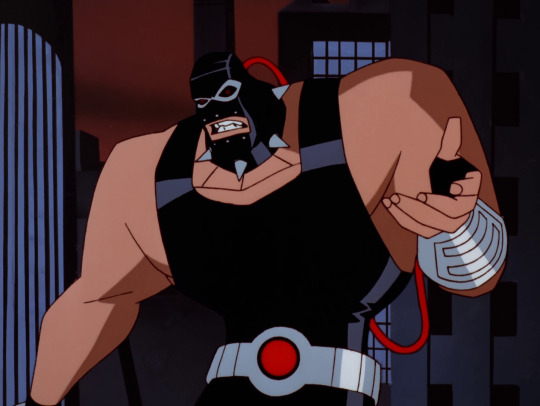
15. Bane
For many people, the Animated Series was their introduction to the character of Bane. And while I can’t say this is the absolute best take on the villain, I do still think this version has merits (incredibly bizarre design choices in both eras of the show aside). While the character’s origins felt a bit rushed and superficial, compared to the comics, Bane himself was fittingly depicted as a menacing, powerful villain, whose obsessive desire to physically break Batman made for some really gripping, intense scenes in the show. Anytime Bruce went up against this hulking monster of a man, it was always a big deal, because on a purely physical level, Bane could easily outmatch the Caped Crusader, even without the aid of his “super steroid,” Venom. Bane even got the honor of appearing in the spin-off movie, “Batman: Mystery of the Batwoman,” where he teamed up with the Penguin (along with gangster Rupert Thorne, and an original antagonist named Carlton Duquesne). The character would later go on to be the inspiration for a personal favorite episode of mine in “Batman Beyond,” which is worth noting, albeit more indirectly. In the show proper, Bane was voiced by Henry Silva; in the film, he was played by Hector Elizondo. Both brought a necessary grit and menacing, firm toughness to Bane, giving him an intellectual side despite his brutish exterior. You always got the sense that, strong as Bane was, he was just as lethal mentally as physically, which made for a dangerous combination whenever he and the Dark Knight came toe to toe.
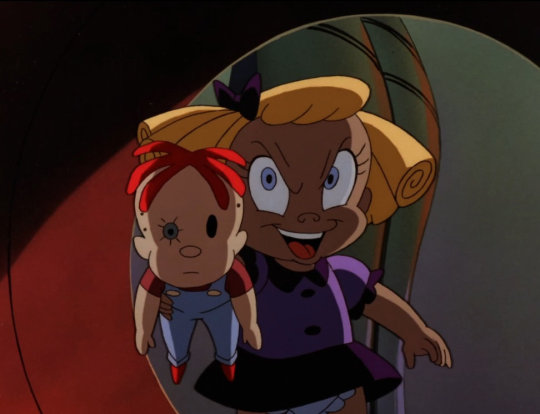
14. Baby Doll.
Not all of the best villains from this series came from the comics. Mary Dahl, a.k.a. Baby Doll, was an original villain for the series, and many consider her to be one of the best of said bunch. While she only appeared twice, both of her episodes are memorable outings for many people. Dahl was once a child actress…an ETERNAL child actress, in fact, as she was diagnosed with a medical condition that makes her seem physically the age of a child, even though her mental and emotional state continued to develop into adulthood as she matured. She’s a grown woman trapped in a little girl’s body, and this - combined with tragic and twisted occurrences in her past - has caused her grip on reality to become shaky and tenuous. She thus becomes the villainous Baby Doll - inspired by a character she once played on television - forever seeking the perfect life she’s never been allowed to have, one way or another. Whether she was trying to rebuild a family she never had, or find a romance that could not be, Baby Doll was equal parts creepy, funny, and very sad: all great qualities to have in a layered villain. It’s really a shame that the series didn’t do more with her.

13. Ventriloquist & Scarface.
Arnold Wesker is a man with a problem. A problem that manifests itself through his wooden ventriloquist dummy, the murderous mobster called Scarface. Wesker suffers from a split-personality; as the Ventriloquist, he is timid, mild-mannered, quiet, placid, and even very sweet. But under the surface is a dark side to his character, for which Scarface acts as an avatar: a psychotic, ruthless, homicidal gangster who thoroughly enjoys being rotten to the core. The duality of Wesker’s character made for a lot of really wonderful scenes and some great episodes, as the struggle between his better half and the dark side inside of him could be used for humorous effect, but also made for frightening and at times extremely tragic scenes. He’s a person who constantly battles with demons he can’t fully control, and so no matter what sinister schemes Scarface hatches up, we always feel sort of sorry for the Ventriloquist himself. One of the most interesting parts of the show was that, because Scarface was just a block of wood at the end of the day, the animators could get away with some pretty messed up things to take the dummy out, which they couldn’t do with a human being. Scarface, over his long and sick career, was shot full of holes, burned to a crisp, crushed down, and shredded into sawdust, just for a FEW of the ways he “died” over the course of the series. Inevitably, however, the dummy would always be remade: as long as evil lived in Arnold’s heart, he could never really be rid of his diabolical alter-ego.

12. Ra’s Al Ghul.
Many nowadays consider Ra’s Al Ghul to be one of Batman’s absolute top-tier villains. He’s certainly one of the most unique. The Demon’s Head - voiced by David Warner in the series - was the leader of a widespread organization (here referred to as “The Society of Shadows”) with the goal of bringing purity to the world. Doesn’t sound so bad, but like so many who claim to want what’s best for the planet, Al Ghul’s scheme comes with a catch: it involves basically eradicating half the life on the globe. (Thanos approves.) While Ra’s has noble intentions, he suffers from something close to a God complex, and is quite, quite mad, despite his usual demeanor of sophisticated refinement. His daughter, Talia, also has feelings for Bruce Wayne, and Ra’s is fully aware of the Dark Knight’s alter-ego. As a result, Batman always faces a dilemna when facing the villain: he is one of the most personal threats Batman will ever face, as he represents a sort of temptation that Bruce must always be cautious of, and seems to represent how badly Bruce could have turned out, himself, if his desire to see justice done went too far. Episodes with Ra’s Al Ghul always felt sort of special; they were usually more akin to Indiana-Jones-esque globetrotters than your typical Batman story, which made them unique and gave them a grander scale than many other tales. I feel kind of bad for placing him so low in the ranks, but I ultimately just like other villains more. Plain and simple.
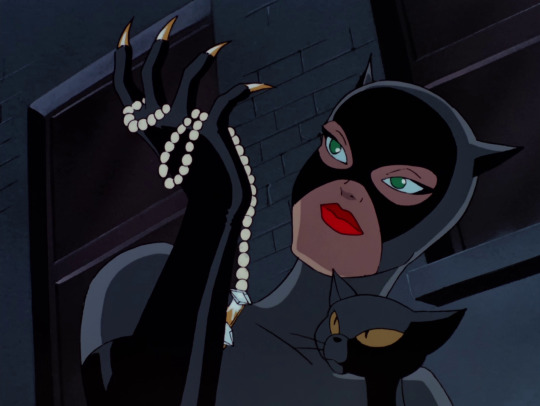
11. Catwoman.
I’ve always had a sort of odd relationship with the version of Catwoman found in BTAS. On the one hand, this is arguably one of the most definitive takes on the character, at least for me. Anytime I think of Catwoman, the Animated Series version is one of the first to come to mind. Similarly, voice actress Adrienne Barbeau’s handling of the character is one of the most iconic, in my humble opinion. However, Catwoman’s actual EPISODES were frequently somewhat lackluster; they weren’t necessarily bad, mind you, but there was always this feeling something was missing with this portrayal in many stories, with only a few exceptions. With that said, the character really was a great portrayal, with Selina Kyle acting as an animal rights activist and philanthropist by day, and a cunning cat burglar by night. She was a very duplicitous character, as Catwoman often is; constantly going back and forth between acting as an enemy and an ally to the Dark Knight and his associates. She’d be helping them take down worse criminals one second, then trying to claw their faces off the next. You couldn’t trust Catwoman for too long, but that was part of what made her precisely so fascinating.

10. Penguin.
I have long stood by the opinion that BTAS created perhaps the most definitive portrayal of the Penguin ever made. I say this because the Penguin, himself, is a character who has evolved over the years. In times long past, he was a gentleman thief who used various tricks - most notably his gadget-geared umbrellas, and various trained birds - to commit his many colorful capers. In more modern times, the character has been reimagined into more of an eccentric gangster; he still has the gimmicks, but they’re more toned-down in favor of depicting him as a calculating schemer who works behind the scenes. There’s also the matter of the Penguin’s design: ever since “Batman Returns” with Danny DeVito’s grotesque interpretation, Penguin’s design has fluctuated between a more human and dapper demeanor, and a more monstrous, gruesome appearance. What was great about the Animated Series version of the character was that you kind of got the best of all those worlds combined: for the first three seasons of the show, Oswald Cobblepot had a DeVito-inspired design, and was depicted as a crafty gentleman thief. In the revamped “New Batman Adventures” era of Season 4, however, the character was given a more classical design, but also depicted in a more modern fashion, as a mobster working from the Iceberg Lounge. In the show, the character was played by the great Paul Williams; in the aforementioned “Mystery of the Batwoman,” the villain was voiced by late, great David Ogden Stiers. While Stiers only did the one film, I honestly can’t decide which of the two did a better job with the character overall. (I’m tempted to say Williams, only because he had more time in the part.) Whichever voice and whichever era you prefer, the Penguin was a persistent thorn in Batman’s side right up to the end.
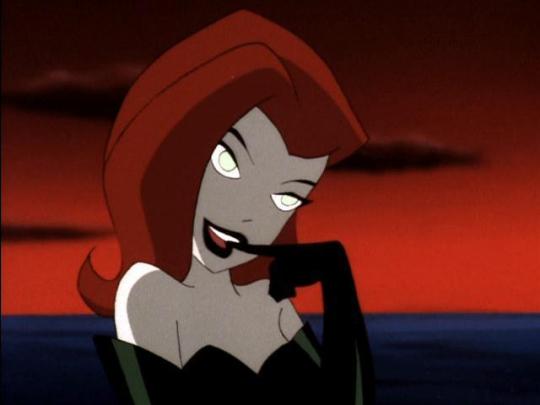
9. Poison Ivy.
While many people seem to prefer the more sympathetic takes on Poison Ivy that have come about in recent years - and make no mistake, I’m all for a sympathetic Ivy, when it’s done well - I actually have always preferred the more classical, cold-blooded Femme Fatale interpretation of the character. There is no better example of such a rendition than the one found in the Animated Series. Voiced by Diane Pershing - who is, by far, the greatest voice for Ivy there ever has been - Ivy’s use of killer plants and dangerous pheromones in her crime sprees made for some particularly disturbing and unsettling episodes when she was working on her own. Aside from that, we can’t forget how this series started the famous duo of Poison Ivy and Harley Quinn, and seeing the two of them work together on other capers was honestly just as entertaining, if not more so. I also loved the dichotomy of Ivy’s personality, with her so often putting up this facade of being strong, cool, and confident…but then going absolutely feral whenever anyone caused trouble for her “babies.” As deadly as she was darkly beautiful, Poison Ivy was one of the most memorable villainesses in the whole show.
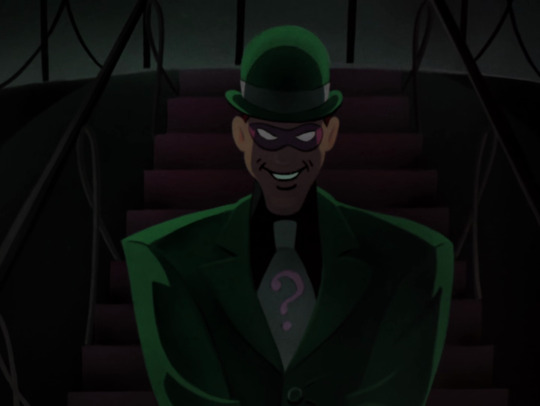
8. Riddler.
Anyone who knows me well knows that I adore the Riddler. Speaking overall, in general, he’s my second favorite Batman Villain of all time. So for many, it’s probably going to be surprising that he shows up just sort of barely nipping into the Top 10. Make no mistake, however, I love John Glover’s take on the Riddler from this show. Aside from perhaps Frank Gorshin’s take in the 1960s, this has become perhaps the Gold Standard by which all other Riddlers since have been held: versions like the character found in the Arkham games, Justice League Action, and many others were all, directly or indirectly, influenced by this specific interpretation. For the past twenty years before the Animated Series, the Riddler was largely seen as a lame, washed-up has-been of a character; a product of more infantile times who had no place in a modern world. We still get ripplings of that idea floating around today. The Animated Series revamped the character greatly, making him a more serious, calculating villain, who was treated not as a clown but an intellectual equal to the Dark Knight. A deranged tech genius who used his skills to create truly ingenious traps, and whose clues were not necessarily easy to figure out. Unfortunately, the creators sort of wrote themselves into a corner with the character, as they found it difficult to conjure up stories for the Riddler; he really only had three episodes to his name, his only other substantial appearance being a small supporting role in the Superman crossover “Knight Time.” Beyond that, however, the Riddler was largely relegated to just having cameo appearances. Perhaps ironically, he was better treated in the spin-off comics for the show…but that’s another story for another time.

7. Scarecrow.
While not necessarily my favorite take on Jonathan Crane, I would argue that the Animated Series gave us the definitive take on the Scarecrow. In the first three seasons, the character was played by Henry Polic II, with a fairly comic-accurate design. In the fourth season, the villain was revamped from the ground up, with a more creepy, frightful appearance, and unsettling vocals provided by Jeffrey Combs. You can argue which one was really better (I personally prefer TNBA’s Scarecrow, but the first three seasons gave Crane much more to do, so to speak), but regardless, this show really helped to establish the Master of Fear as one of the Caped Crusader’s most formidable opponents. I loved just about every episode the Scarecrow appeared in; even his weakest outings had some redeeming qualities, largely due to the way the character worked: with his Fear Toxin in hand, able to bring about people’s worst nightmares before their eyes, this haunting adversary was able to provide some very tense, dramatic, and creative stories. Heck, even in episodes where he WASN’T the focus, Crane often stole the spotlight with his wicked personality and exaggerated visual stylings. The more often I see both versions of Crane in this show, the more I love them each.

6. Clayface.
Yet again, another villain whom many would argue was given his definitive interpretation in BTAS. In the comics, there have been multiple Clayfaces over the years. The Animated Series mixed and matched different elements from pretty much all of them to create what many would consider to be the ultimate version of the character. In the show, Clayface is a former actor named Matt Hagen, who was transformed into a being of living clay-like material after ingesting a dangerous amount of a substance called “Renuyu.” Intended as a beauty cream, Renuyu was unstable, and Hagen’s hideous change was the ultimate show of how imperfect the formula was. The event not only melted Hagen’s body, but also twisted his mind, causing him to become a callous, thieving scoundrel, who will stop at nothing to get what he wants. Clayface’s appearances were few in number, but what they lacked in quantity, they made up for in quality. Just about every episode he showed up in was a favorite of mine; most of them were among the darkest and most emotionally wrenching stories of the show, dealing with themes of identity and innocence lost. Combine this with the remarkable visuals a shapeshifting clay monster could allow for, and it’s not hard to see why he made such a noteworthy mark. (P.S.: For certain readers...yes, I chose this specific screenshot for "that" reason. Bua ha ha.)

5. Two-Face.
Played by the late Richard Moll, Harvey Dent - a.k.a. Two-Face - has almost always been one of Batman’s most personal and tragic foes. The Animated Series pulled no punches in that regard: viewers were given a couple of episodes to meet Harvey before he ever became the villainous Two-Face, which made Dent’s change from hero to villain all the more impactful. On top of that, as the show went on, Harvey’s sanity was repeatedly tested and challenged, as the scars that afflicted him were more than simply skin deep. As tragic as Two-Face was, he could also work well as a menacing straightforward villain (such as in episodes like “Sins of the Father”) or even have a good deal of humor to him (such as in “Almost Got ‘Im”). Much like the Scarecrow, the more often I look at Two-Face in this particular show, the more I find myself enjoying what they did with the character, as they really did cover just about every angle possible with this half-and-half hoodlum.
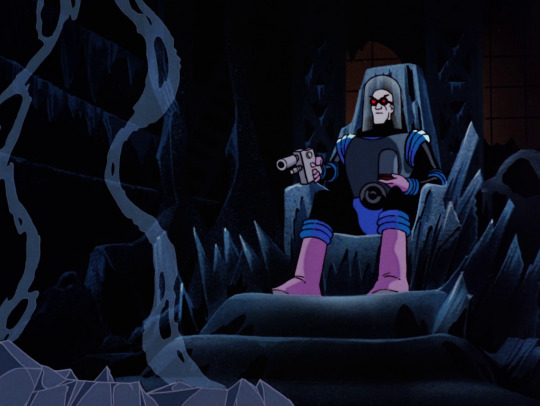
4. Mr. Freeze.
Anyone who knows about “Batman: The Animated Series” probably knows what it did for the character of Mr. Freeze. Much like the Riddler, the series revamped the villain for a new generation, and the revamp they did continues to influence takes on Freeze to this day. In fact, this reinterpretation was SO good, that any version that DOESN’T borrow from it usually seems to be detested by fans. Also like the Riddler, Freeze made relatively few appearances in the DCAU as a whole…but, like Clayface and the Scarecrow, every single episode, even the weaker ones, was at least interesting, if not outright great. (As maligned as “Cold Comfort” is, you can’t say it isn’t memorable.) Michael Ansara’s vocals and the sorrowful, almost Shakespearean dialogue and background the character was offered allowed for one of the most fascinating reinventions of a character in the entire series, and many to this day consider Freeze to be one of their favorite Batman villains largely just because of this interpretation. To be honest, the great surprise here is that he isn’t in my Top 3…but hopefully the ones above him will not disappoint.

3. The Mad Hatter.
Anybody who knows me probably also knows I love the Mad Hatter. Not only that, but they probably know that, out of every interpretation of Jervis Tetch there’s ever been, this is by far my favorite. This is a case of a character who is most assuredly better in the series than he ever was, and arguably ever has been, in the comics themselves. In the comics, Tetch is usually depicted as a psychotic little creep with little to no redeeming value; a nasty little wretch who needs to be decked out by Batman’s fist as fast as possible. The Animated Series, however, created perhaps the most human, tragic, and marvelously mad Hatter of them all. In the show, Jervis Tetch - voiced to sheer perfection by the magnificent Roddy McDoall - is a former neuroscientist, who was driven off the deep end by the combination of his discovery of a method to control people’s minds…and the unrequited feelings he had for his secretary, coincidentally named Alice. Over the course of the series, we see Jervis seemingly go increasingly more insane and become increasingly more warped and deranged, but there’s always this underlying sympathy, given how he started out. He’s yet another villain where, even in his weakest episodes - I’m looking at you, “Animal Act” - he, himself, proved to always be a spotlight moment. It’s really no surprise he ranks in my personal top three.

2. Harley Quinn.
Really, what can I say here? It’s Harley Quinn. The Animated Series created this character, Arleen Sorkin (God Rest Her Soul) MADE this character, and to this day I don’t think any other version of Harley has ever come close to the absolute marvelousness of the original. She’s funny, she’s complex, she’s sympathetic but still has her mean moments, and she’s frankly become so popular since this series that I’m starting to get a little bit frustrated with the gal. Nevertheless, I'll always love this original interpretation. (pauses) I’ve seriously got nothing else. This is a no-brainer.
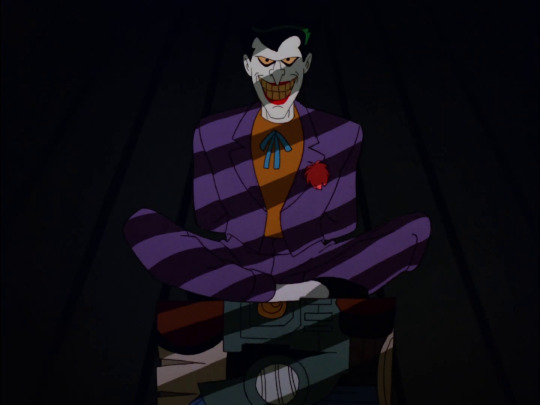
1. Joker.
Just as “Batman: The Animated Series” gave us arguably the greatest Batman voice of all time, in the form of Kevin Conroy, it also provided us with by far the greatest and most influential Joker voice of all time, courtesy of Mark Hamill. Funny enough, Tim Curry was originally planned to voice the Joker, and even did some recordings for a couple of the character’s early episodes. However, for various reasons, Curry’s work was dropped, and Hamill was instead brought on to play the Clown Prince of Crime, having impressed the creator’s after playing a totally different character in the episode “Heart of Ice.” Hamill used Claude Rains’ work as the Invisible Man as inspiration, and the rest is pretty much history. From the early seasons, to TNBA, to nearly every other show in the DCAU, the Joker was a constant presence of villainy, always sort of lurking in the back of Batman’s mind, a symbol of the evil he was sworn to combat. Mocking and malicious, this dastardly demon has really never been portrayed better than he was in this show, I would argue; other attempts since have come close - including other versions voiced by Hamill, who would continue to play the character for many years to come - but no cigar. There’s not a whole lot else I can say: he’s the Joker. His presence at number one should shock nobody. Without any doubt, the Clown Prince of Crime is My Favorite Villain from “Batman: The Animated Series.”
HONORABLE MENTIONS INCLUDE…
Roxy Rocket.
Clock King.
Killer Croc.
Lock-Up.
#list#countdown#best#favorites#top 15#batman#batman the animated series#btas#tnba#dcau#batman villains#villains#wb#happy birthday kevin conroy
8 notes
·
View notes
Text
i’m at the halfway point in season 7 of gilmore girls (just finished 7x10!) so here are my rambling thoughts that no one asked for!
1. i don’t care that my ship is broken up and i have to endure lorelai and christopher being MARRIED... i like season 7 more than season 6. i was so relieved to be done with season 6... there was so much tension between EVERYONE. there were some good moments (the scene of the gilmores fighting at the end of 6x13 is one of the best moments in the entire show), but i felt so stressed watching the entire season. 2. speaking of lorelai and christopher... why the marriage, WHY?! honestly i always thought they’d get back together at some point, and i thought a good time would be when lorelai and luke were broken up. mostly just because i view christopher as the perfect representation of lorelai’s past and luke as her present and, symbolically, lorelai learning and accepting that her and christopher are not a good fit would mean she is finally leaving that part of her life behind. however... that could have been done without the complication of marriage. you mean to tell me that the show has been building to lorelai getting married since s1 and it finally happens spontaneously like this? off-camera? with CHRISTOPHER?! nope nope nope 3. i’ve really over-analyzed lorelai’s love life... but i actually like all three of the guys she is paired with - max, christopher, and luke. however, again, i view them all as three distinct representations: max is the kind of guy lorelai would have imagined herself with (but their love is built on fantasy); christopher is the guy from her past that she has to finally let go of (love built on nostalgia); and luke is the guy that fits perfectly with the life she has built for herself and the person she grew into (love built on reality - they feel like true partners). 4. okay, actually, i USED to like christopher, but around the third time he came back (s4? s5? who knows), i got really annoyed with him. because all he did was just dance back into lorelai and rory’s lives whenever it was convenient for him and he kept getting their hopes up. it was wrong and i loved when lorelai told him off for it (s3? idk anymore). that could’ve been the conclusion to their relationship. but nahhh, he had to come back in s5 (in peak jerk form), then s6, and now s7... i am so tired of this man. 5. i’m not as invested in rory’s love life as everyone else, but i like logan. i do think he and rory have become kinda boring in s6 & s7, but i still think their pairing makes the most sense and i really like them together. ultimately i just want rory and logan to become a kick-butt journalist team. (or to both be uber successful and travel the world together) 6. luke has made all the difference this season, tbh. luke in s6 felt annoyingly out-of-character at times... he feels much more like himself here. man has he gone through it though. first lorelai ends their engagement, then kirk destroys his diner, then lorelai marries christopher, then he finally gets to bond with april only for her to move across the country... ouch. i haven’t seen how the custody battle plays out, but i hope it doesn’t end too devastatingly. it’s a good storyline, though - far better use of luke & april than s6. i’m really hurting for luke. 7. i really need lorelai and christopher to end things soon though. i don’t think i could stand it if lorelai and luke just got back together at the very end (though that’s how these things typically go...). the last scene i saw was emily coming to lorelai’s to tell her that marriage is more than just the ring... i’d LOVE if emily influenced her decision, especially after her parents have been so blindly pro-christopher. 8. characters i desperately need to see more of: lane, paris, and emily. (more friday night dinners!) 9. what the writers did with lane though... PREGNANT?! i always thought the show should fittingly end with someone pregnant, but LANE?! no words. and with ZACK?! their relationship makes 0 sense. i just wanted to see lane living her best life as a successful drummer... and instead this. though i keep imagining what it would’ve been like if dave was able to stay on the show... replace zack with dave and it probably would’ve been a cute storyline. maybe not the pregnancy, but their progressing relationship. 10. i have been a huge paris stan since her very first episode. right away i knew she was gonna be my special character. i don’t know how everyone else feels about her, but i just want her to succeed at everything and have the world. plus she is so freakin hilarious. i loved her more in the chilton days - her storylines at yale have been meh. but hopefully she gets one decent storyline (or episode!) before the season is over. 11. rory, lane, and paris needed more scenes together. actually lane and paris becoming a power duo would’ve been fantastic. 12. i need lorelai and emily to have a very strong bonding moment before the season is over!!! my top demand (besides lorelai and luke)
#ma post#gilmore girls#lorelai gilmore#luke danes#this post is a mess#i'm watching like three episodes a night though so by the time i come back on here i've progressed through so many storylines#maybe i'll update as i finish the show
6 notes
·
View notes
Text
So, a little while ago...
I got bored. And I began to wonder... when are the birthdays of the Kingdom Hearts characters? I quickly discovered it's impossible to know the exact birthdays of anyone outside their year of birth, other than three. Let's just go through those now:
(quick note: I'll be using Destiny Islands' destruction as a base 0 year, but the calendar won't revolve around it. BID is Before Islands Destruction and AID is After.)
(this will also contain some Dark Road and kind of ReMind spoilers, which I will tag as well. Don't proceed if you don't want them. )
Terra was born 30 BID, we don't have any inclination to a date. However, he is 10 years younger than this biologically. He'll be a year older in ReMind, so 21.
Aqua was born 28 BID, again no idea of the date. She is also 10 years younger than this biologically? She'll be 19 in ReMind.
Ven was born... Well, it isn't confirmed the time between the Age of Fairytales and Dark Road, but he appears to be about 10 in Uχ, and he is biologically 16 in Birth By Sleep. We'll say this is undeterminable for now. He will be biologically 17 in ReMind.
Master Xehanort is anywhere between 80 and 85 in BBS (I believe) , if we go off Nomura's estimate for him. Therefore he's born around 90-95 BID. He's dead, so no advance in age.
Eraqus is most likely a few years younger than Xehanort, considering his appearance is that of someone much younger, still having dark black hair for the most part (unless he's dyeing it lol) and so, with Dark Road, we know that Xehanort is 18-20 after the time skip, so I would say thaw that Eraqus is roughly 3 years younger than him (I wish it was more, but the fact they're such similar heights implies a small gap in age), so Eraqus was most likely 15-16 in the scene at the end of Dark Road Chapter 1, giving him a birth year of roughly 87 BID. He's also dead, so...he's not any older.
Lea and Isa are more than likely the same age as each other, and are most likely Ven's (biological) age in BBS, making them about 26/7 in KH3. Therefore their year of birth is 26 BID, and they'll be 28 ish in ReMind, even if we don't see them.
Riku is a year older than Sora and Kairi, and therefore his birth year is one year before theirs, so 15 BID. He'll be 17 in ReMind.
Kairi is the same age as Sora, so we know her year of birth is 14 BID. She's 16 in ReMind.
If I've missed anyone significant, let me know, but I think that covers the majority of important characters.
There's 3 more that I haven't mentioned, but that's because we either know their full birthday, or we can work it out. These are, of course, Sora, Roxas and Xion.
Thanks to Nomura once again, we know Sora's official birthday is the day of release of Kingdom Hearts 1, or 28th March. Sora is 14 in KH1, so his birth year is 14BID. Therefore his full birth date is 28/3/14BID (I'm Irish so we put the day first).
But what about Roxas and Xion?
Well, let's begin!
We know that Sora is 14 still at the end of Chain of Memories, therefore this must take place before 28/3/0BID.
If we use Days as an estimate for when Roxas is born, we know this is Day 1. We also know Kingdom Hearts 1 ends around Day 16. Therefore Roxas is born roughly 2 weeks before the end of KH1, which means Days ends 2 weeks before a year after this. Xion is "born" (not really, but it's the best time frame to use) a week after that, so 1 week before the end of KH1. Therefore they are both biologically 14 at this point.
This means that when, a year later, they both go back to Sora they are around 15. Roxas goes back to Sora exactly a year after he is born (the 358 days + 7 days from the beginning of KH2 = 365) so he is exactly 15 when he returns in KH3. Xion dies exactly a week before Roxas, meaning she was 2 weeks away from turning 15, as her "birthday" is a week after Roxas'. Therefore the day when she is a year older is actually 1 week delayed in a way, meaning she turns 15 2 weeks after she returns in KH3 (I'm not counting her time in the Organisation as we can't actually determine how long she was there for), and her birthday is (fittingly) 14 days after Roxas post KH3.
Sora turns 15 sometime during his sleep in Days. We see Axel note that Hayner, Pence and Olette have started their summer holidays, and that it is almost over. I believe it is safe to assume that DiZ would have time flow at the same rate in the data Twilight Town, as there are no indications of this not being the case, and therefore the last days of Roxas' holiday are also the same as the real Hayner, Pence and Olette. This means that Roxas goes back to Sora on the last day of the summer holidays, which we already determined was his birthday.
If we take the Japanese system for school holidays for Twilight Town, we know that students go back to school on 1st September, therefore making Roxas' birthday 31st August. Xion's is 2 weeks after this, making hers 14th September.
With this information we can also work out how long KH1 was.
If we look again at Days' timeline, it takes 15 days between Sora's death and the end of the game, meaning that the time in Traverse Town, sealing Hollow Bastion, and completing the End of the World takes about 2 weeks. If we look at the other worlds, we could use the timelines of the films, but the issue with KH1 is that the worlds don't follow the plot of the films. So, instead, we can use this 2 week timeframe to estimate a rough period of time for KH1.
The End of the World takes roughly a week and a half to complete, if we take away the time at Traverse Town and Hollow Bastion. Therefore each world would take roughly a week and a half, or let's say 10-12 days, to complete. We'll use either of these numbers depending on the world, which will include travel time. I'll go through these quickly.
Traverse Town is most likely 12 days.
Wonderland is most likely a day on its own, but with travel time we'll say 10 days.
Olympus is a weird one, probably an anomaly, as we are supposed to go back often, but it most likely equates to around 12 days as well.
Deep Jungle is probably around 10 days.
Agrabah is most likely 10 days as well.
Atlantica is probably 12 days.
Monstro is probably 10 days.
Halloween Town is most likely 12 days
Neverland is again a weird one, but in real flow time would probably only be a couple of days at most, but with travel time we'll bump it up to 10 days as well.
Hollow Bastion is 12 days up to Sora's death.
This adds up to 110 days, or 15.7 weeks, which is around 4 months. As we know Roxas' birthday (and Sora's death day) is 31st August, we can go back these 110 days, we get to the 13th May. Therefore The Destiny Islands are destroyed on 13/5/0AID.
I hope this was interesting for you guys.
Credit for the Days timeline goes to Kingdom Hearts Info Block (I'm not sure of their tag, if anyone knows please tell me).
#kingdom hearts#kh#kh remind spoilers#kh dark road spoilers#dark road spoilers#remind spoilers#kh roxas#kh xion#kh sora#Kh characters
8 notes
·
View notes
Text
some things i liked and did not like about the rise of skywalker ***spoilers***
now having seen it and having had the time to sit and talk and collect my thoughts, i have a list of the things i didn’t enjoy and, amongst all this negativity, the things i did.
contains spoilers of course!
things i did not enjoy:
finding out about palpatine off-screen
so stupid! this was one of the things i disliked the most because of what a cheap, lazy writing choice it was. i wanted to see the characters have to put it together, have to work for it and then when facing palpatine, have it be on their terms instead of his? instead we get him announcing his presence and kylo meeting him in the first 3 minutes.
treatment of characters
i made a post about this. just so much wrong, so many deserved better, most of all rose, rey and ben. a lot of the characters were treated as afterthoughts.
implied finn having feelings for rey
dumb. overdone. tired.
knights of ren
felt cheap and underused. learned nothing about them, it was something i was waiting 3 movies for and the final chance to show them was wasted.
the resistance is back to perfect!
i understand that this was due to the timeskip, which i guess was necessary, but i felt that it was kind of cheap to not show any sort of struggle. a year has passed and BAM they’re right where they were in TFA. the losses faced in TLJ very much felt erased.
the pacing
awful. just awful. things felt too rushed or too slow pretty much through the entire movie.
the visuals
much less well-done than TLJ. the use of colour and light was much weaker in my opinion, the locations more generic, and the imagery lacking. that said, palpatine’s lair was so fittingly creepy, and the reylo moment on kijimi/kylo’s ship with the black and white juxtaposition - those were nice.
irrelevant or convenient plot elements
zorii bliss was not a necessary character. chewie was conveniently on another transport. d-0, while super cute and funny, was also just a deus ex machina. hux being a spy - could have been entirely removed but oh, finn and poe need to get off the ship somehow. rey’s return to ahch-to was rushed, her interactions with luke could have been on any other planet. she did not need to pilot luke’s x-wing specifically but they forced it. lando - lando was basically a consolation prize for chewie with little relevance. pryde literally could have been replaced with hux and made for a more interesting narrative.
snoke clones
what the fuck was that?
the fleet
somehow the entirety of the fleet was magically stored, 100% operational and with fully functioning crew, under the crust of some random planet? and every single one of those ships has planet-destroying capabilities?
the other “fleet”
where the fuck were these allies in TLJ, huh? i get that it’s the last stand and maybe more people showed up because of that but damn.
leia’s absence was felt
i understand this was not in the control of the creators but truly, i felt like there was a gaping hole where leia should have been.
the Trio
i enjoyed their banter but it felt inconsistent through the movie. rey and poe didn’t get along one minute, the next they’re fine. if this had been introduced and pushed in previous films, it would have made more sense and felt less hollow. as it stands, it felt like a forced attempt to call back the OT vibes that just fell flat.
rey palpatine
ugh. let’s reduce strength to a bloodline and in the process ignore what was set up in the last movie. yay! also, palpatine fucked someone at some point and that is utterly disgusting.
rey skywalker
felt forced. she did not need to take the skywalker name.
kylo’s transition to ben.
before anyone jumps on me, i want to clarify that specifically i am referring to the speed of his transition from ruthless supreme leader to full on ben. i loved his redemption, i just wish i could have seen him do it more gradually and with a bit more struggle? he just goes from “i will find you rey and turn you dark like me” to “i am ben solo” so quickly that i found it a bit jarring?
palpatine’s constantly changing plans.
kill rey, no wait, take the throne rey, no wait, let me kill you both and take the throne myself. pick one you crusty fuck.
force dyad
honestly why establish it if you’re going to ignore it in about 2 seconds?
inadequate expression of star wars main themes
the ideas of hope, of redemption, of love and of family - all central to star wars, and none properly delivered on.
ben’s death.
heartbreaking. he deserved love and happiness and a life. that’s all i can say about that. however, in a transition to things i liked: if he had to die, i’m really pleased that it was with an act of love. he chose to make a sacrifice, the ultimate sacrifice, for his soulmate. i don’t like that he had to die, but i can find peace in the way it happened - on his terms, on the light side, in the arms of the woman he loved.
things i did enjoy (a lot actually):
babu frik
was so fucking funny. that is all.
c-3po.
also surprisingly funny for a droid i’m usually annoyed by?
jannah
i surprisingly really loved her character. i thought she might be an addition like zorii bliss, but i enjoyed naomi ackie’s acting a lot. she felt much more genuine. however i do think there was a missed opportunity in working on her and finn’s shared background as ex-stromtroopers.
force healing abilities
i thought were super cool! i really liked healing the serpent, it was a nice subversion of the expectation to be trapped and outrunning a monster through a labyrinth of corridors. loved how when rey healed kylo, she healed his scar too. just also it’s always nice to see new things being done with the force.
force fighting.
it was lovely to see force techniques being used in the lightsaber battles (as compared, for instance, to the throne room fight of TLJ); and also to see force-aided physical feats like jumps that don’t look like naruto-style ninja backflips. definitely felt more real.
poe’s moment in the x-wing
taking in the damage and destruction all around him. i felt the weight he was feeling in that moment.
rey picking herself off the ground
after palpatine drains her and kylo’s life force. i loved her moment of peace and centering, gathering the strength to do what comes next. while i didn’t love the voices of the previous jedi, it made for a lovely sequence of “i’m not done with you yet” and showcases her strength.
the moment with ben and han
gorgeous scene echoing han and ben’s last interaction in TFA. just an amazing callback with such different emotion and the final turning of ben back to the light. i really loved this bit.
adam driver’s acting performance in general.
absolutely the best, the most amazing, performance of the film. if nothing else, the switch from kylo to ben, despite having zero dialogue, should speak for itself. he managed to convey a completely different personality through his mannerisms, physicality and visuals alone. oh, and the death/ressurrection scene! the absolute desperation with which he crawls to the woman he loves. the infinite depth of emotion adam manages to transmit through only his eyes and his facial expressiveness. he deserves an oscar nomination for this in my opinion.
reylo kiss
i don’t even need to explain this. the smile. the pure happiness, the tender touch, the moment of just love and joy and letting themselves be together, finally. i could not have asked for more of a beautiful first kiss. we’re ignoring what comes after.
overall impression
tros fell flat. i lived for ben’s redemption and reylo, but this was not enough to make up for the mistreatment of most of the characters, the poorly coordinated and frankly rushed structure, and most importantly, the failure to deliver on its themes of family and hope. i felt like it tried to do too much and achieved too little.
38 notes
·
View notes
Text
My Top 10 Favorite Boardwalk Empire Characters in Order
1. Jimmy Darmody
My baby boy... who I immediately fell in love with in the pilot. The emotional kid, who’s looking to prove himself. I always like young, emotional hotheads. And Jimmy has so many interesting things about him; his relationship to Gilian, to Nucky, to Angela, to Al, to Richard, to the war. He is such a tragic character, and has a fittingly tragic ending. He was just lost and had no idea what he was doing. A perfect, smart, and strategic secondhand man, but didn’t have what it takes to be a boss.
2. Arnold Rothstein
Every scene he is in is a delight. He is badass, smart, and (almost) always in control. He is both eccentric and terrifying. He is electric when he is on screen, commanding attention. He has amazing quotes, saying some of the smartest things in the whole series. Just what a joy to watch.
3. Charlie ‘Lucky’ Luciano
oh man.... what to say about Charlie. I love every iteration of him. The hot-headed, arrogant man we first meet. Who is never content, always trying to do more and be more, branching off from his bosses, constantly disobeying them. Until he gets fed up with being kicked around, and he learns to see the flaws of his father figures and the other bosses. And he learns from them; their strengths, their weaknesses, their achievements, and their mistakes. And then he becomes cold, and calculating, and highly intelligent in the 5th season. And improves on everyone who came before him, looking forward and coming up with a new way to do things. Everyone underestimated him, and as Nucky says that makes them “dumber than [they] knew” (absolutely in love with that line.) He brought people together, and tore down ideas about who were “his people.” He wasn’t about that tribalism. He was also one of the snarkiest motherfuckers ever. And I love his smart mouth and complete irreverence, especially in the earlier seasons. Also he is pretttttty easy on the eyes, and looks so god damn good in deep blue suits, and he has no right to.
4. Richard Harrow
My heart literally aches everytime he’s on screen. Somehow, even though he probably has the highest body count, he is the most sympathetic character in the show. He is so openly vulnerable, which is such a great contrast to the other characters. I just always wanted him to be happy. Also, he is one of the only (if not the only) character who does not get into the mob for money and status. He get involved because of love and friendship. He is empty and lonely and he is good at killing people so the mob is a natural fit. Even though he doesn’t really have a place there; he just had a place with Jimmy.
5. Eli Thompson
I know this is an unpopular/unusual choice, but I love Eli. He is a fascinating character. I love his inferiority complex. He resents, and is envious of Nucky, but he can’t do what Nucky does. There is a reason for his inferiority complex. Nucky is smarter and more talented than him. Eli hates being in Nucky’s shadow, but doesn’t have what it takes to leave it. Eli is not that smart or that brave. He is not really anything special. And this juxtaposition of an inferiority complex, and actually being inferior is fascinating to me. However, there are many ways, that Eli is superior to Nucky; namely, in his family. Eli is much better at personal relationships than Nucky. Until season 5, he had a good relationship with his wife and family, and never cheated on his wife, in juxtaposition to almost every other male character, until season 5 that is. And his trajectory is both tragic and inevitable. In the end, his punishment, unlike Nucky, is not death, but the loss of the one thing he ever had over Nucky: his family.
6. Chalky White
Heartache and Sass. That is what Chalky brings. He is also a refutation to people who says “you can’t have black people in period films/ shows that aren’t service people or slaves and be realistic.” Despite it being the 20s, Chalky is in a position of power. At the same time, the show does not erase the racism of the time, and Chalky’s blackness and America’s racism are central to his character. In the pilot, after Jimmy tells Nucky that he wants to make something of himself, Nucky replies, “This is America, ain’t it... Who the fucks stopping you.” But as Chalky character shows, for many Americans, there are a lot stopping them. Chalky is not afforded the mobility that Nucky ascribes to America. He is a gangster, but the show illustrates how his mobility and ability to rise to power is severely restricted because of his race. Thus showing, that all black people in period films/shows don’t have to either be absent or servants for the text to be realistic, and can in fact, even be in positions that popular culture don’t believe they could have ever been in. In fact, there were black gangsters during this time period. It is fascinating and enjoyable seeing Chalky try to operate in this world, taking power when he can. Whenever he has leverage (i.e. Nucky desperately needed help), he used it. And he was allowed to be morally complex like the other characters, killing people, and being driven by greed and status (and often putting himself and his own advancement over the advancement of his community).
7. Al Capone
I did not expect the Capone we got... in the best possible way. Similar to Charlie, it was amazing to see his evolution, and how he grew into the person he became. I don’t know if it’s accurate, but I love how he starts as one of the most loyal, and respectful of the right-hand men on the show. Surprisingly, his rise of power was non-violent, and he just took over when his boss retired. Then, he becomes the person that today’s public sees him as: powerful, erratic, violent, and unpredictable. Stephen Graham’s performance is just amazing: one of the best, if not, the best in the show. He perfectly plays all parts and iterations of Capone, and make them all seamlessly and coherently blend into each other. He nails the humor and fun aspects of the character, and absolutely kills the emotional moments, such as him talking to his son before going to jail in the series finale. He was always such a joy to watch, I especially enjoyed the scenes between him and Van Alden. Their dynamic was just gold.
8. Meyer Lanksy
It took me a while for my affection to grow for him. I overlooked him in the earlier seasons, but in the later seasons, and after I finished the show, and couldn’t stop thinking about it, I began to like his character more than I had. He is smart and carefully considers his moves. He is patient and great at reading a situation and discerning the role he should play in it. He, like Charlie, was underestimated by everyone around him. He can be unassuming and quiet, and that's one of the things that makes him dangerous. Meyer often feels like the one adult in a world full of kids, and that’s amazing. His friendship and partnership with Charlie is a highlight of the show. In a show filled with doublecrossing and people fucking each other over, it’s nice to have two people who can completely trust each other, and generally care for the other.
9. Billie Kent
Sweet summer child. She has the best smile and brightens up every scene she is in. Extremely charismatic and likeable. And the show never makes the mistake of making her too pure. She knows who Nucky is and doesn’t care. I wish we saw more of her. I wish she wasn’t fridged.
10. Margaret Schroeder
She quite a while to grow on me. I especially grew fond of her in the later seasons, which unfortunately is when they started to use her wayyyy les. She is smart and witty. And even if I didn’t always like her overall storylines, she has some great moments.
#boardwalk empire#jimmy darmody#charlie luciano#arnold rothstein#richard harrow#eli thompson#chalky white#meyer lansky#Al Capone#billie kent#margaret schroeder#my posts#ablogthatishenceforthmine#he's more than just lucky
73 notes
·
View notes
Text
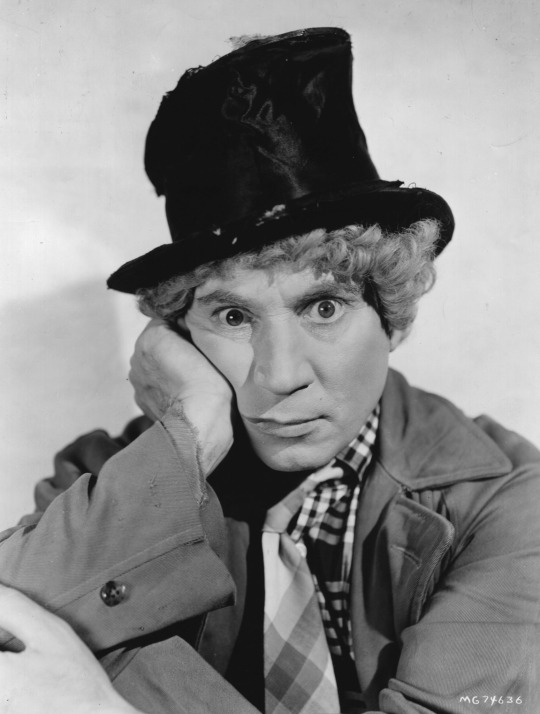
Arthur "Harpo" Marx (born Adolph Marx; November 23, 1888 – September 28, 1964) was an American comedian, actor, mime artist, and musician, and the second-oldest of the Marx Brothers. In contrast to the mainly verbal comedy of his brothers Groucho Marx and Chico Marx, Harpo's comic style was visual, being an example of both clown and pantomime traditions. He wore a curly reddish blond wig, and never spoke during performances (he blew a horn or whistled to communicate). He frequently used props such as a horn cane, made up of a pipe, tape, and a bulbhorn, and he played the harp in most of his films.
Harpo was born on November 23, 1888, in Manhattan. He grew up in a neighborhood now known as Carnegie Hill on the Upper East Side of Manhattan, on East 93rd Street off Lexington Avenue. The turn-of-the-century tenement that Harpo later called (in his autobiography Harpo Speaks!) "the first real home I can remember" was populated with European immigrants, mostly artisans—which even included a glass blower. Just across the street were the oldest brownstones in the area, owned by people like David L. Loew and William Orth.
Harpo's parents were Sam Marx (called "Frenchie" throughout his life) and his wife, Minnie Schoenberg Marx. Minnie's brother was Al Shean. Marx's family was Jewish. His mother was from East Frisia in Germany, and his father was a native of Alsace in France and worked as a tailor.
Harpo received little formal education and left grade school at age eight (mainly due to bullying) during his second attempt to pass the second grade. He began to work, gaining employment in numerous odd jobs alongside his brother Chico to contribute to the family income, including selling newspapers, working in a butcher shop, and as an errand office boy.
In January 1910, Harpo joined two of his brothers, Julius (later "Groucho") and Milton (later "Gummo"), to form "The Three Nightingales", later changed to simply "The Marx Brothers". Multiple stories—most unsubstantiated—exist to explain Harpo's evolution as the "silent" character in the brothers' act. In his memoir, Groucho wrote that Harpo simply wasn't very good at memorizing dialogue, and thus was ideal for the role of the "dunce who couldn't speak", a common character in vaudeville acts of the time.
Harpo gained his stage name during a card game at the Orpheum Theatre in Galesburg, Illinois. The dealer (Art Fisher) called him "Harpo" because he played the harp. He learned how to hold it properly from a picture of an angel playing a harp that he saw in a five-and-dime. No one in town knew how to play the harp, so Harpo tuned it as best he could, starting with one basic note and tuning it from there. Three years later he found out he had tuned it incorrectly, but he could not have tuned it properly; if he had, the strings would have broken each night. Harpo's method placed much less tension on the strings.[citation needed] Although he played this way for the rest of his life, he did try to learn how to play correctly, and he spent considerable money hiring the best teachers. They spent their time listening to him, fascinated by the way he played. The major exception was Mildred Dilling, a professional harpist who did teach Harpo the proper techniques of the instrument and collaborated with him regularly when he had difficulty with various compositions.
In the autobiography Harpo Speaks! (1961), he recounts how Chico found him jobs playing piano to accompany silent movies. Unlike Chico, Harpo could play only two songs on the piano, "Waltz Me Around Again, Willie" and "Love Me and the World Is Mine," but he adapted this small repertoire in different tempos to suit the action on the screen. He was also seen playing a portion of Rachmaninoff's "Prelude in C# minor" in A Day at the Races and chords on the piano in A Night at the Opera, in such a way that the piano sounded much like a harp, as a prelude to actually playing the harp in that scene.
Harpo had changed his name from Adolph to Arthur by 1911. This was due primarily to his dislike for the name Adolph (as a child, he was routinely called "Ahdie" instead). The name change may have also happened because of the similarity between Harpo's name and Adolph Marks, a prominent show business attorney in Chicago. Urban legends stating that the name change came about during World War I due to anti-German sentiment in the US, or during World War II because of the stigma that Adolf Hitler imposed on the name, are groundless.
His first screen appearance was in the film Humor Risk (1921), with his brothers, although according to Groucho, it was only screened once and then lost. Four years later, Harpo appeared without his brothers in Too Many Kisses (1925), four years before the brothers' first released film, The Cocoanuts (1929). In Too Many Kisses, Harpo spoke the only line he would ever speak on-camera in a movie: "You sure you can't move?" (said to the film's tied-up hero before punching him). Fittingly, it was a silent movie, and the audience saw only his lips move and the line on a title card.
Harpo was often cast as Chico's eccentric partner-in-crime, whom he would often help by playing charades to tell of Groucho's problem, and/or annoy by giving Chico his leg, either to give it a rest or as an alternative to a handshake.
Harpo became known for prop-laden sight gags, in particular the seemingly infinite number of odd things stored in his topcoat's oversized pockets. In the film Horse Feathers (1932), Groucho, referring to an impossible situation, tells Harpo that he cannot "burn the candle at both ends." Harpo immediately produces from within his coat pocket a lit candle burning at both ends. In the same film, a homeless man on the street asks Harpo for money for a cup of coffee, and he subsequently produces a steaming cup, complete with saucer, from inside his coat. Also in Horse Feathers, he has a fish and a sword, and when he wants to go to his speakeasy, he stabs the fish in its mouth with his sword to give the password, "Swordfish." In Duck Soup, he produces a lit blowtorch to light a cigar. As author Joe Adamson put in his book, Groucho, Harpo, Chico and Sometimes Zeppo, "The president of the college has been shouted down by a mute."
Harpo often used facial expressions and mime to get his point across. One of his facial expressions, which he used in every Marx Brothers film and stage play, beginning with Fun in Hi Skule, was known as "the Gookie." Harpo created it by mimicking the expression of Mr. Gehrke, a New York tobacconist who would make a similar face while concentrating on rolling cigars.
Harpo further distinguished his character by wearing a "fright wig". Early in his career it was dyed pink, as evidenced by color film posters of the time and by allusions to it in films, with character names such as "Pinky" in Duck Soup. It tended to show as blond on-screen due to the black-and-white film stock at the time. Over time, he darkened the pink to more of a reddish color, again films alluded to it with character names such as "Rusty".
His non-speaking in his early films was occasionally referred to by the other Marx Brothers, who were careful to imply that his character's not speaking was a choice rather than a disability. They would make joking reference to this part of his act. For example, in Animal Crackers his character was ironically dubbed "The Professor". In The Cocoanuts, this exchange occurred:
Groucho: "Who is this?"
Chico: "Dat's-a my partner, but he no speak."
Groucho: "Oh, that's your silent partner!"
In later films, Harpo was repeatedly put in situations where he attempted to convey a vital message by whistling and pantomime, reinforcing the idea that his character was unable to speak.
The Marxes' film At the Circus (1939) contains a unique scene where Harpo is ostensibly heard saying "A-choo!" twice, as he sneezes. It is unclear, however, whether he actually voiced the line, or if he mimed it while someone said it off-camera.
In 1933, following U.S. diplomatic recognition of the Soviet Union, he spent six weeks in Moscow as a performer and goodwill ambassador. His tour was a huge success. Harpo's name was transliterated into Russian, using the Cyrillic alphabet, as ХАРПО МАРКС, and was billed as such during his Soviet Union appearances. Harpo, having no knowledge of Russian, pronounced it as "Exapno Mapcase". At that time Harpo and the Soviet Foreign Minister Maxim Litvinov became friends and even performed a routine on stage together. During this time he served as a secret courier; delivering communiques to and from the US embassy in Moscow at the request of Ambassador William Christian Bullitt, Jr., smuggling the messages in and out of Russia by taping a sealed envelope to his leg beneath his trousers, an event described in David Fromkin's 1995 book In the Time of the Americans. In Harpo Speaks!, Marx describes his relief at making it out of the Soviet Union, recalling how "I pulled up my pants, ripped off the tape, unwound the straps, handed over the dispatches from Ambassador Bullitt, and gave my leg its first scratch in ten days."
The Russia trip was later memorialized in a bizarre science fiction novella, The Foreign Hand Tie by Randall Garrett, a tale of telepathic spies which is full of references to the Marx Brothers and their films (The title itself is a Marx-like pun on the dual ideas of a "foreign hand" and a style of neckwear known as a "four-in-hand tie.")
In 1936, he was one of a number of performers and celebrities to appear as caricatures in the Walt Disney Production of Mickey's Polo Team. Harpo was part of a team of polo-playing movie stars which included Charlie Chaplin and Laurel and Hardy. His mount was an ostrich. Walt Disney would later have Harpo (with Groucho and Chico) appear as one of King Cole's "Fiddlers Three" in the Silly Symphony Mother Goose Goes Hollywood.
Harpo was also caricatured in Sock-A-Bye Baby (1934), an early episode of the Popeye cartoon series created by Fleischer Studios. Harpo is playing the harp, and wakes up Popeye's baby, and then Popeye punches and apparantly "kills" him. (After Popeye hits him, a halo appears over his head and he floats to the sky.)
Friz Freleng's 1936 Merrie Melodies cartoon The Coo-Coo Nut Grove featuring animal versions of assorted celebrities, caricatures Harpo as a bird with a red beak. When he first appears, he is chasing a woman, but the woman later turns out to be Groucho.
Harpo also took an interest in painting, and a few of his works can be seen in his autobiography. In the book, Marx tells a story about how he tried to paint a nude female model, but froze up because he simply did not know how to paint properly. The model took pity on him, however, showing him a few basic strokes with a brush, until finally Harpo (fully clothed) took the model's place as the subject and the naked woman painted his portrait.
Harpo recorded an album of harp music for RCA Victor (Harp by Harpo, 1952) and two for Mercury Records (Harpo in Hi-Fi, 1957; Harpo at Work, 1958).
Harpo made television appearances through the 1950s and 60s, including a 1955 episode of I Love Lucy, in which he and Lucille Ball re-enacted the famous mirror scene from the Marx Brothers movie Duck Soup (1933).[19] In this scene, they are both supposed to be Harpo, not Groucho; he stays the same and she is dressed as him. About this time, he also appeared on NBC's The Martha Raye Show. Harpo and Chico played a television anthology episode of General Electric Theater entitled "The Incredible Jewelry Robbery" entirely in pantomime in 1959, with a brief surprise appearance by Groucho at the end. In 1960, he appeared in an episode of The DuPont Show with June Allyson entitled "A Silent Panic", playing a deaf-mute who, as a "mechanical man" in a department store window, witnessed a gangland murder. In 1961, he made guest appearances on The Today Show, Play Your Hunch, Candid Camera, I've Got a Secret, Here's Hollywood, Art Linkletter's House Party, Groucho's quiz show You Bet Your Life, The Ed Sullivan Show, and Your Surprise Package to publicize his autobiography Harpo Speaks!.
In November 1961 he guest-starred with Carol Burnett in an installment of The DuPont Show of the Week entitled "The Wonderful World of Toys". The show was filmed in Central Park and featured Marx playing "Autumn Leaves" on the harp. Other stars appearing in the episode included Eva Gabor, Audrey Meadows, Mitch Miller and Milton Berle. A visit to the set inspired poet Robert Lowell to compose a poem about Marx.
Harpo's two final television appearances came less than a month apart in late 1962. He portrayed a guardian angel on CBS's The Red Skelton Show on September 25. He guest starred as himself on October 20 in the episode "Musicale" of ABC's Mr. Smith Goes to Washington, a sitcom starring Fess Parker, based on the 1939 Frank Capra film.
Harpo married actress Susan Fleming on September 28, 1936. The wedding became public knowledge after President Franklin D. Roosevelt sent the couple a telegram of congratulations the following month. Harpo's marriage, like Gummo's, was lifelong. (Groucho was divorced three times, Zeppo twice, Chico once.) The couple adopted four children: Bill, Alex, Jimmy, and Minnie. When he was asked by George Burns in 1948 how many children he planned to adopt, he answered, "I’d like to adopt as many children as I have windows in my house. So when I leave for work, I want a kid in every window, waving goodbye."
Harpo was good friends with theater critic Alexander Woollcott, and became a regular member of the Algonquin Round Table. He once said his main contribution was to be the audience for the quips of other members. In their play The Man Who Came to Dinner, George S. Kaufman and Moss Hart based the character of "Banjo" on Harpo. Harpo later played the role in Los Angeles opposite Woollcott, who had inspired the character of Sheridan Whiteside.
In 1961 Harpo published his autobiography, Harpo Speaks!. Because he never spoke a word in character, many believed he actually was mute. In fact, radio and TV news recordings of his voice can be found on the Internet, in documentaries, and on bonus materials of Marx Brothers DVDs. A reporter who interviewed him in the early 1930s wrote that "he [Harpo] ... had a deep and distinguished voice, like a professional announcer", and like his brothers, spoke with a New York accent his entire life. According to those who personally knew him, Harpo's voice was much deeper than Groucho's, but it also sounded very similar to Chico's. His son, Bill, recalled that in private Harpo had a very deep and mature soft-spoken voice, but that he was "not verbose" like the other Marx brothers; Harpo preferred listening and learning from others.
Harpo's final public appearance came on January 19, 1963, with singer/comedian Allan Sherman. Sherman burst into tears when Harpo announced his retirement from the entertainment business. Comedian Steve Allen, who was in the audience, remembered that Harpo spoke for several minutes about his career, and how he would miss it all, and repeatedly interrupted Sherman when he tried to speak. The audience found it charmingly ironic, Allen said, that Harpo, who had never before spoken on stage or screen, "wouldn't shut up!" Harpo, an avid croquet player, was inducted into the Croquet Hall of Fame in 1979.
Harpo Marx died on September 28, 1964, (his 28th wedding anniversary), at age 75 in a West Los Angeles hospital, one day after undergoing heart surgery. Harpo's death was said to have hit the surviving Marx brothers very hard. Groucho's son Arthur Marx, who attended the funeral with most of the Marx family, later said that Harpo's funeral was the only time in his life that he ever saw his father cry. In his will, Harpo Marx donated his trademark harp to the State of Israel. His remains were cremated, and his ashes were scattered at a golf course in Rancho Mirage, California.
3 notes
·
View notes